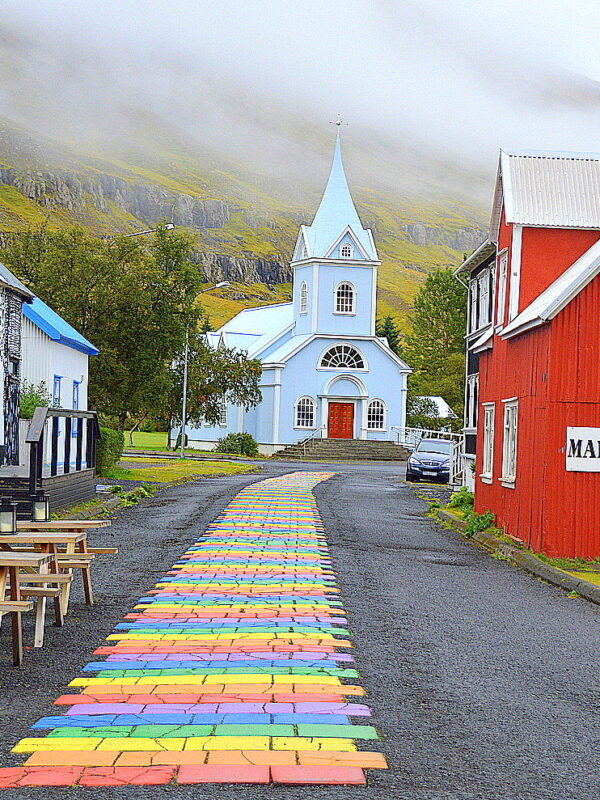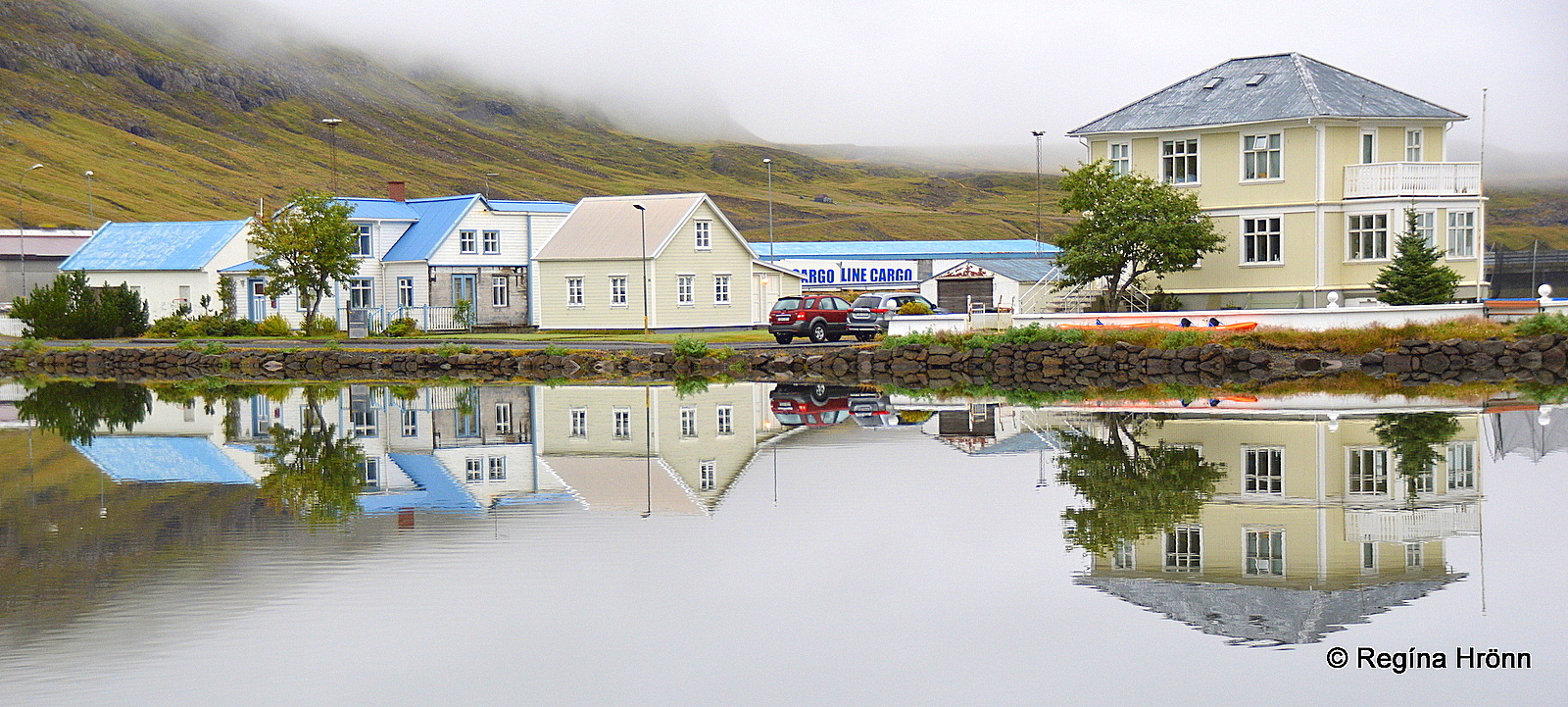
Seyðisfjörður town
In my last 2 travel-blogs we have been exploring East Iceland from Höfn in SE-Iceland to Mjóifjörður fjord.
By now we have reached Seyðisfjörður fjord, where you will find one of the most picturesque towns in the Eastfjords, nestled between steep mountains, Mt. Strandartindur and Mt. Bjólfur.
The town which has got a population of approx. 673, bears the same name as the fjord.
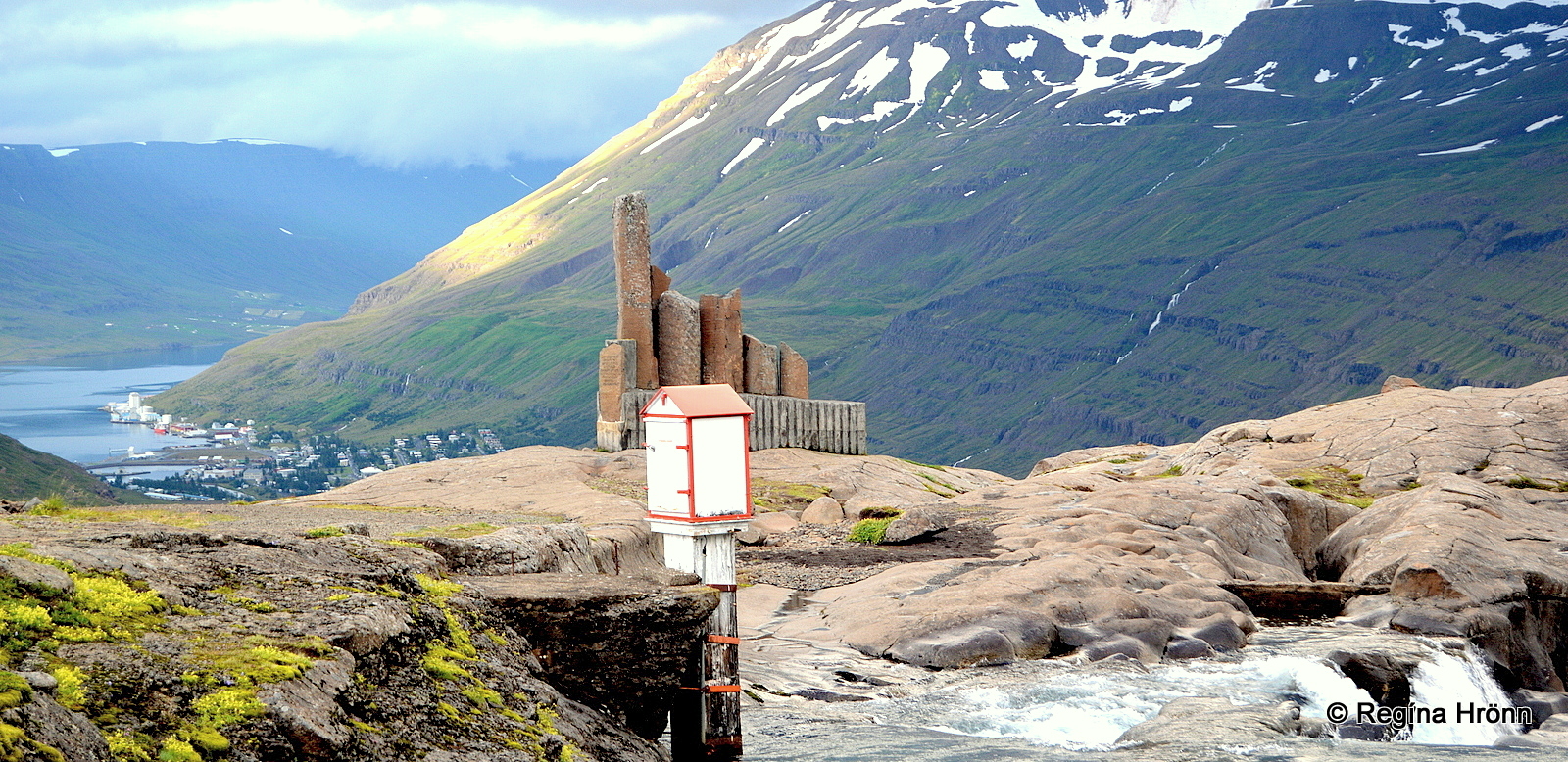
The view from Fjarðarheiði heath
To reach Seyðisfjörður we descend into the fjord from the steep Fjarðarheiði heath mountain pass on road 93, from where there is a beautiful view of the lovely town below.
If you have watched the movie the Secret Life of Walter Mitty then you will remember the scene where Ben Stiller skated down the steep road on Fjarðarheiði heath towards Seyðisfjörður on a longboard.

Seyðisfjörður town
The car/passenger ferry Norröna – Smyril line sails from the Farao islands to Seyðisfjörður and Denmark.
The ferry stops weekly in Seyðisfjörður and that is when the town becomes alive.
If you have watched the Icelandic series Ófærð – Trapped, then scenes from the series were filmed here in Seyðisfjörður.
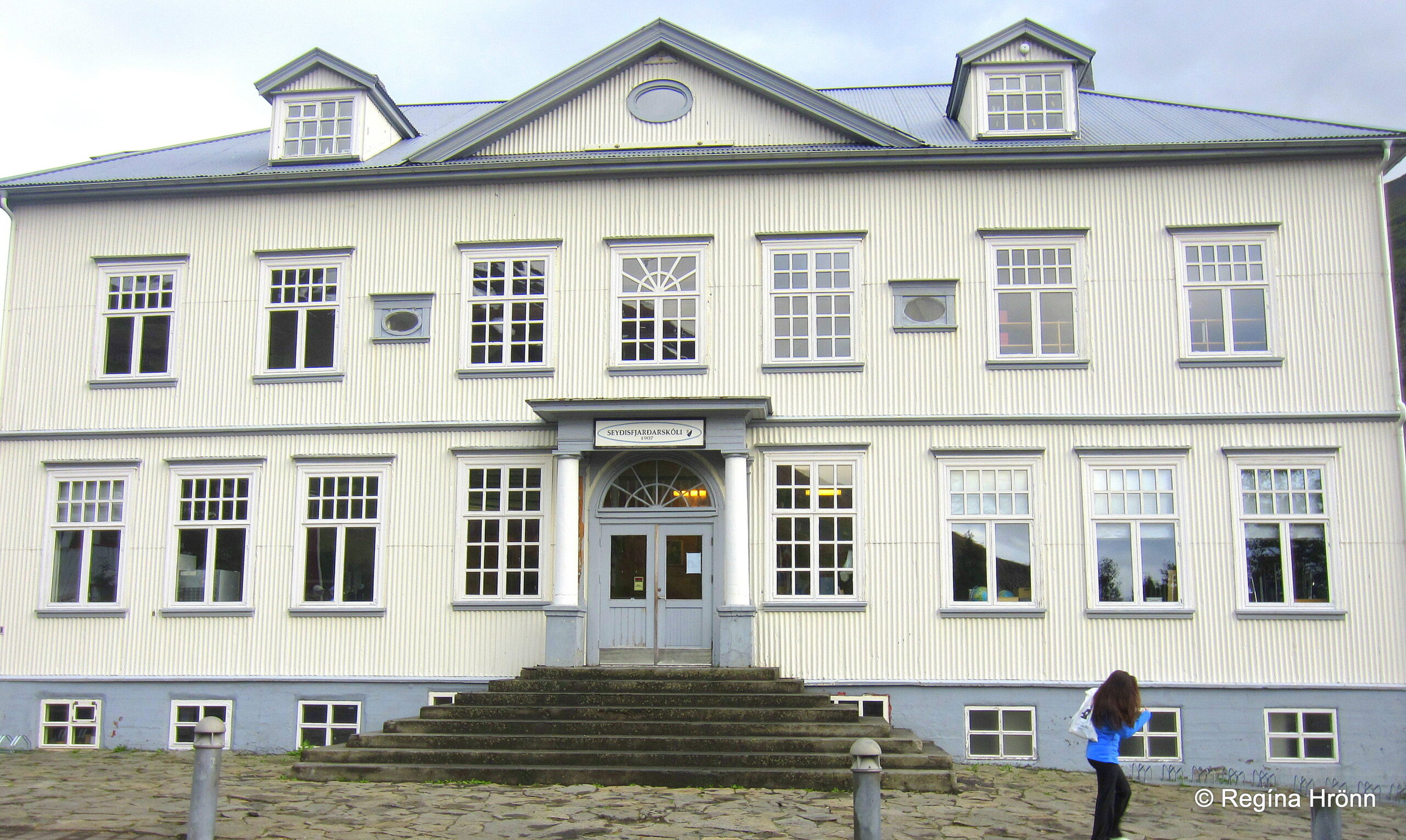
Seyðisfjarðarskóli school
While visiting Seyðisfjörður town you will notice all the beautiful old timber houses.
The photo above is of Seyðisfjarðarskóli elementary school which was built in 1907. This neoclassic building was imported fitted from Norway.
Many of the old houses were built according to a Norwegian timber house tradition in the early 20th century.
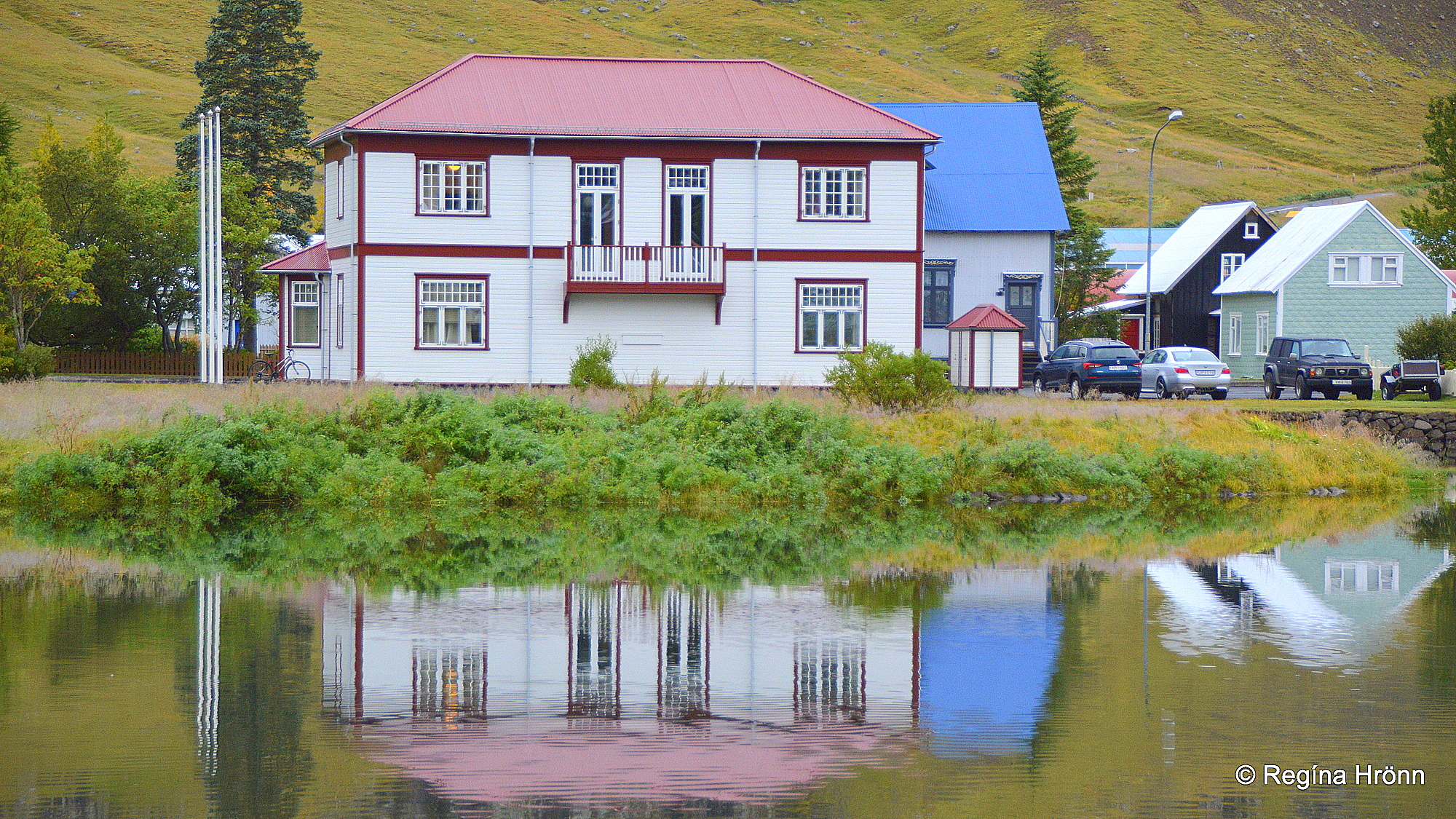
Old timber houses
The town was built up around herring fishery in 1870-1900 when the Norwegians sailed over and caught herring by Iceland.
They built up facilities in the village, and Seyðisfjörður boomed and got its municipal rights in 1895.
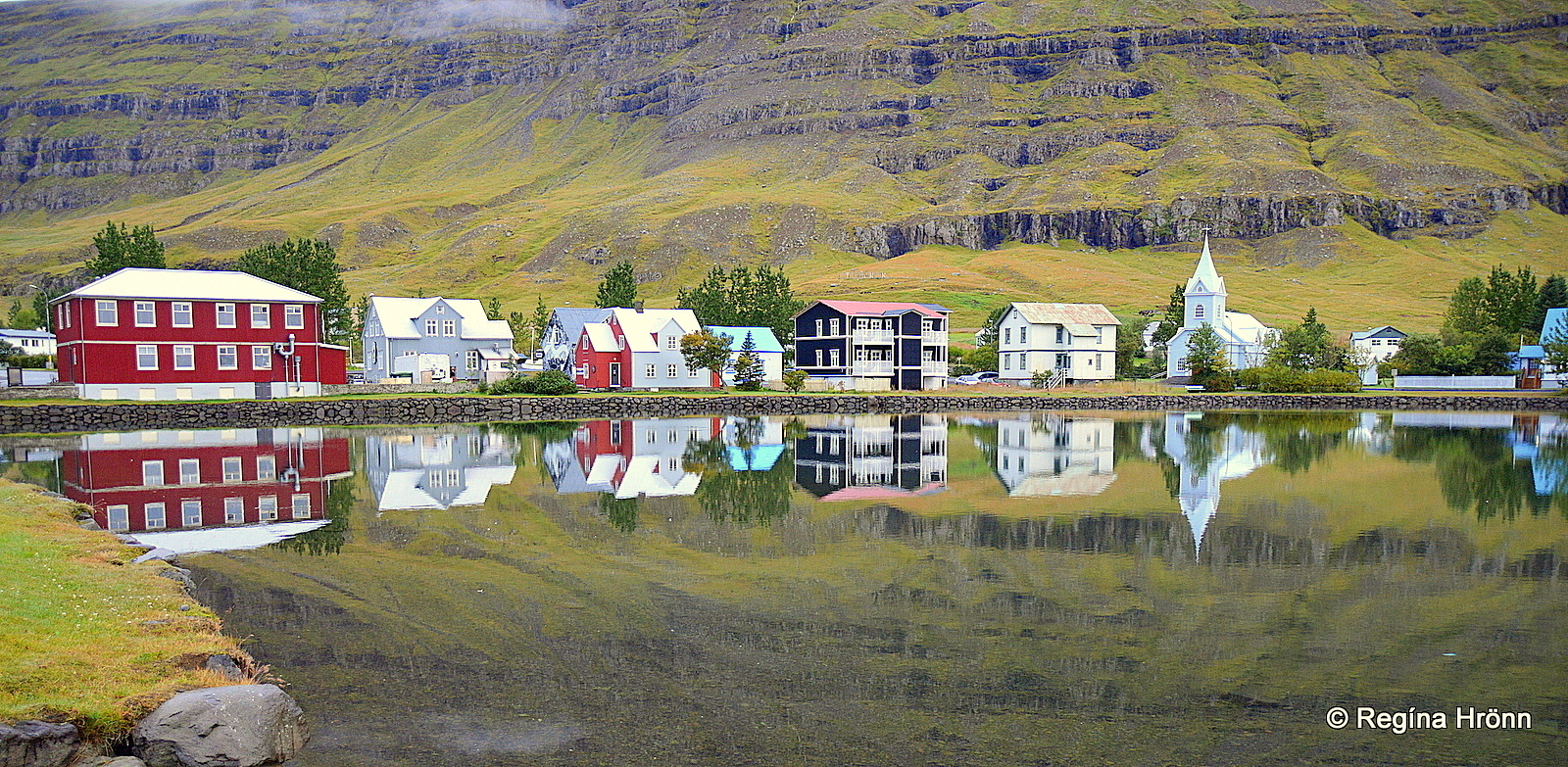
Seyðisfjörður town
In WW2 the British forces had a base here in Seyðisfjörður and later on the Americans.
In 1944 an oil tanker, SS El Grillo, was torpedoed and sunk by a German air attack and still lies at the bottom of the sea in Seyðisfjörður fjord.
You will notice a cannon by the sea. It is a GARRETT cannon from SS El Grillo and it acts as a monument to the attack.
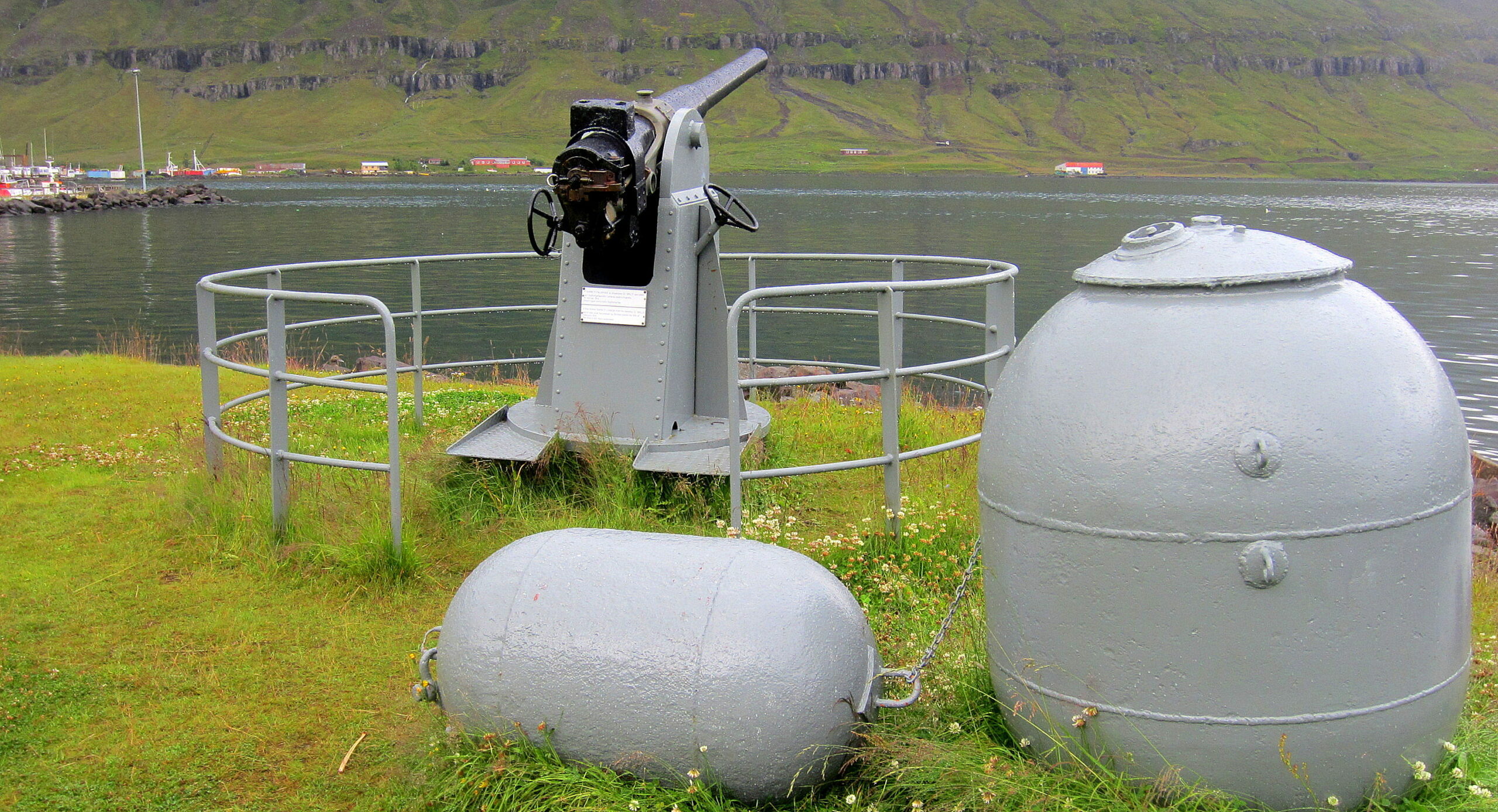
A cannon from the tankship El Grillo
Fjarðará river divides the town into two parts, Fjarðaralda and Búðareyri.
Fjarðará river runs its course into Lónið – the Lagoon, which looks like a large pond.
I took the photos below when I stayed for the night in Seyðisfjörður, at Hotel Snæfell right by Lónið.
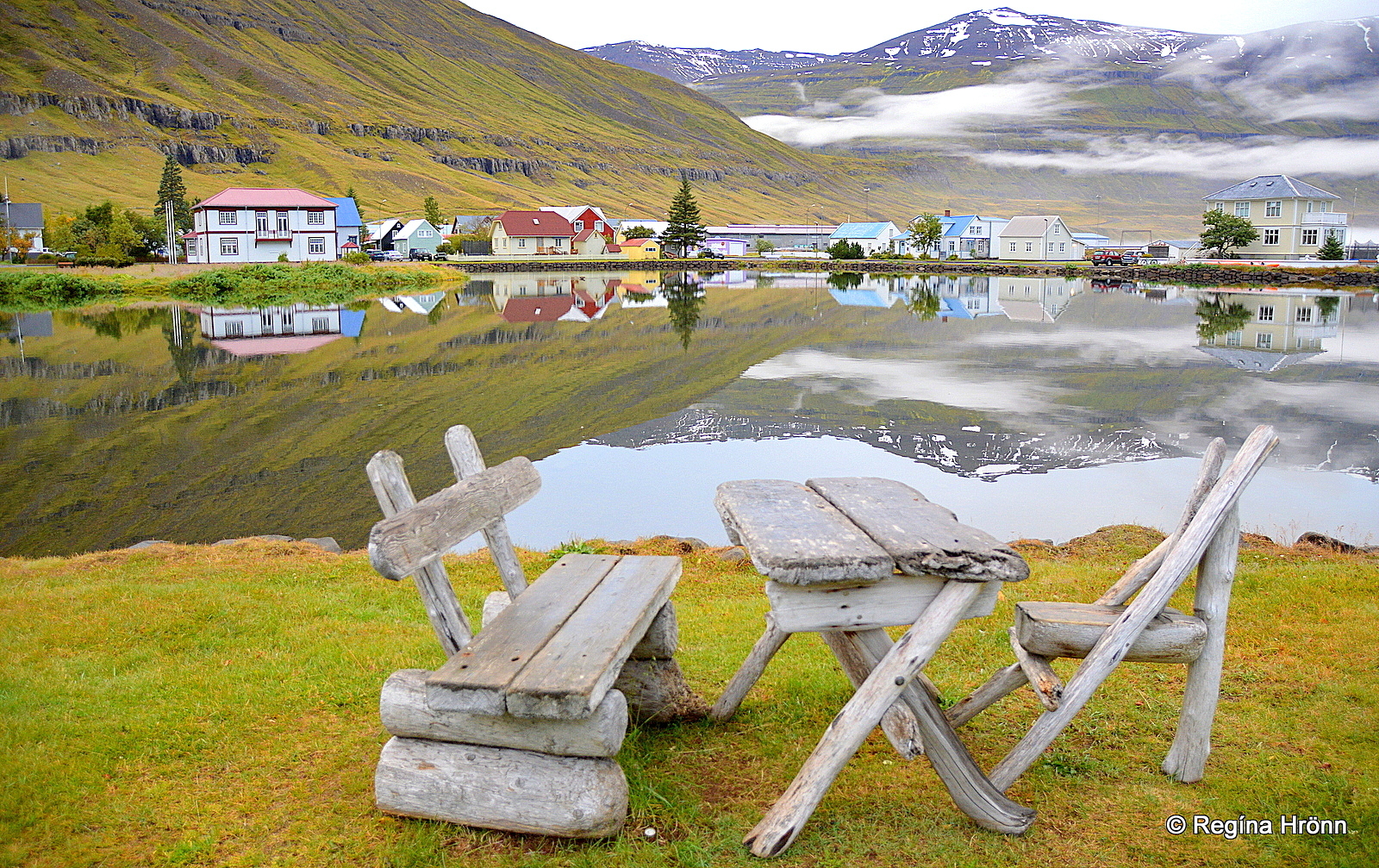
Seyðisfjörður is such an idyllic town
I woke up in the middle of the night and Austfjarðaþokan – the Fog of the Eastfjords partly covered the town and Lónið.
The summer nights in Iceland are bright and magical so I went outside in my pajamas with my cameras.
It was so still and mystical being alone outside in the fog that I sat down on the driftwood bench right outside the hotel and waited for the fog to lift.
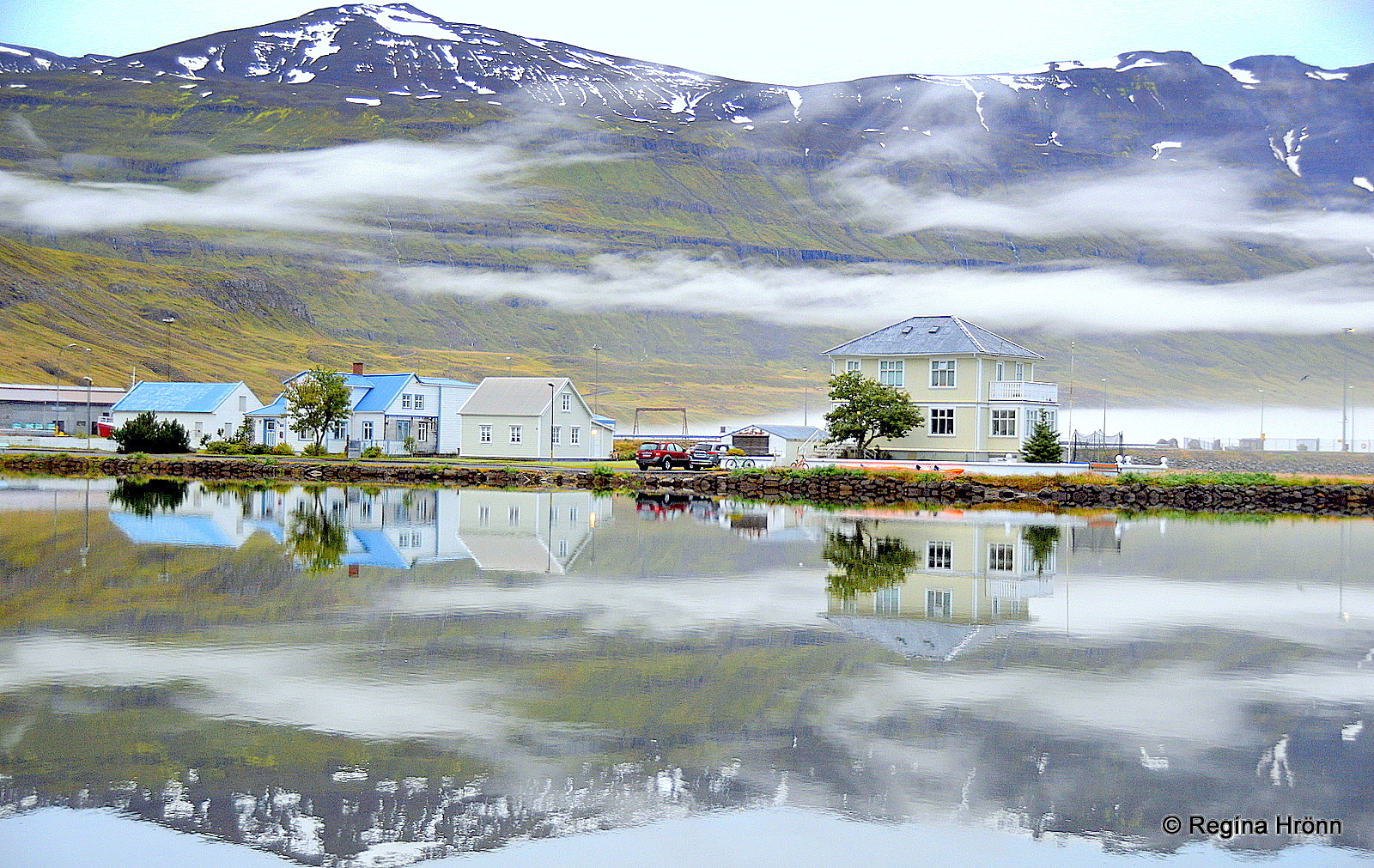
The fog lifted
When the fog lifted this beautiful sight appeared and Seyðisfjörður looked even more magical.
Seyðisfjarðarkirkja – the Blue Church & the Rainbow Street
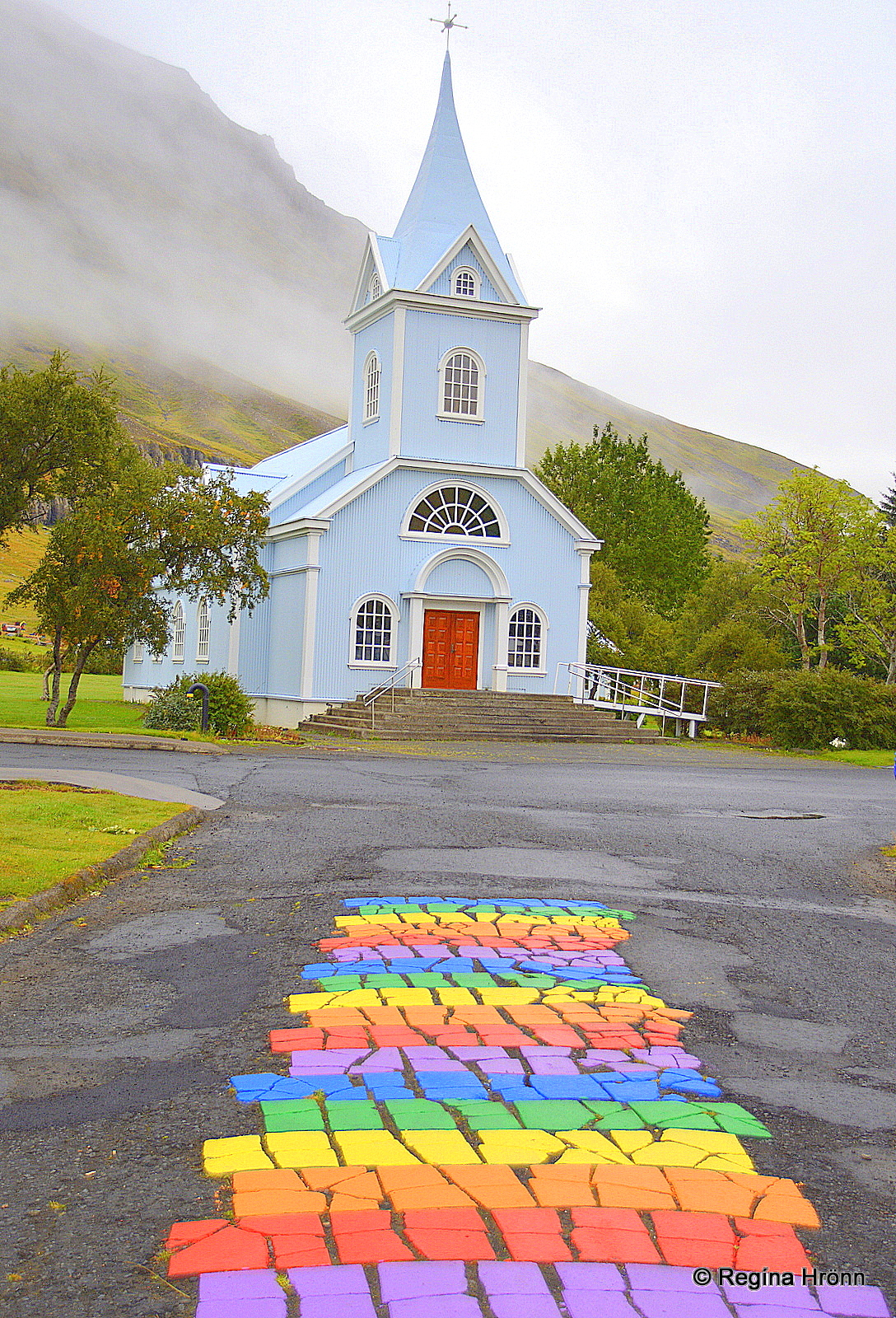
The Blue Church and the Rainbow street
The most popular photo of Seyðisfjörður is for sure of the Rainbow street leading to Seyðisfjarðarkirkja church – the Blue Church.
The Blue Church is such a popular photo model, as it were, that it has become one of the landmarks of not only Seyðisfjörður but of Iceland.

The Blue Church and the Rainbow street
We also have a rainbow street in Reykjavík – the Skólavörðustígur rainbow street.
Then we have the rainbow entrance to a hotel at Breiðdalsvík in East Iceland which I showed you in my last travel-blog.
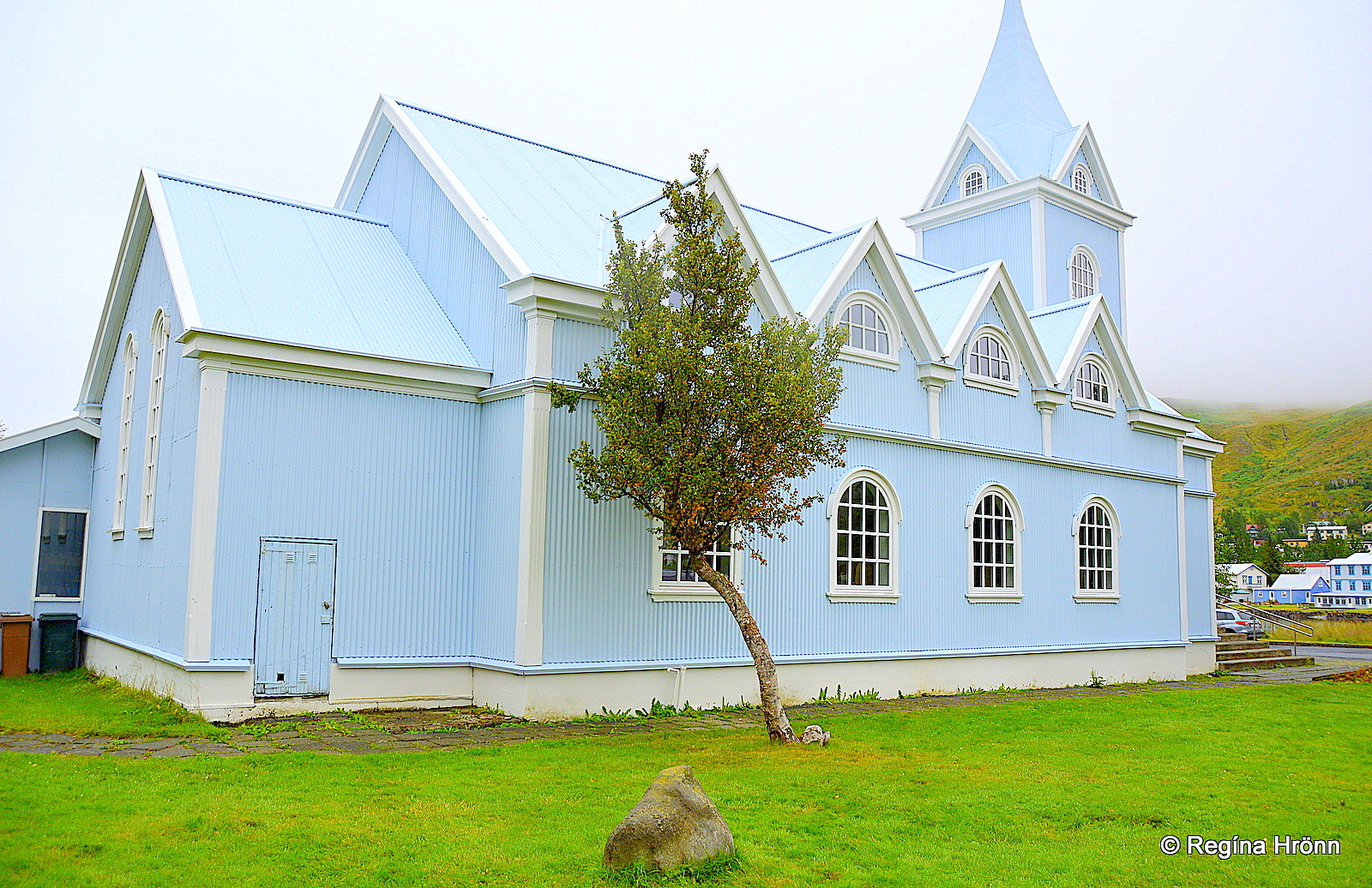
Seyðisfjarðarkirkja church
The preserved powder blue timber church was consecrated in 1922 so it will celebrate its 100th anniversary this year.
It was partly built from the material of an older church, Vestdalseyrarkirkja, which stood on Vestdalseyri here in Seyðisfjörður fjord.
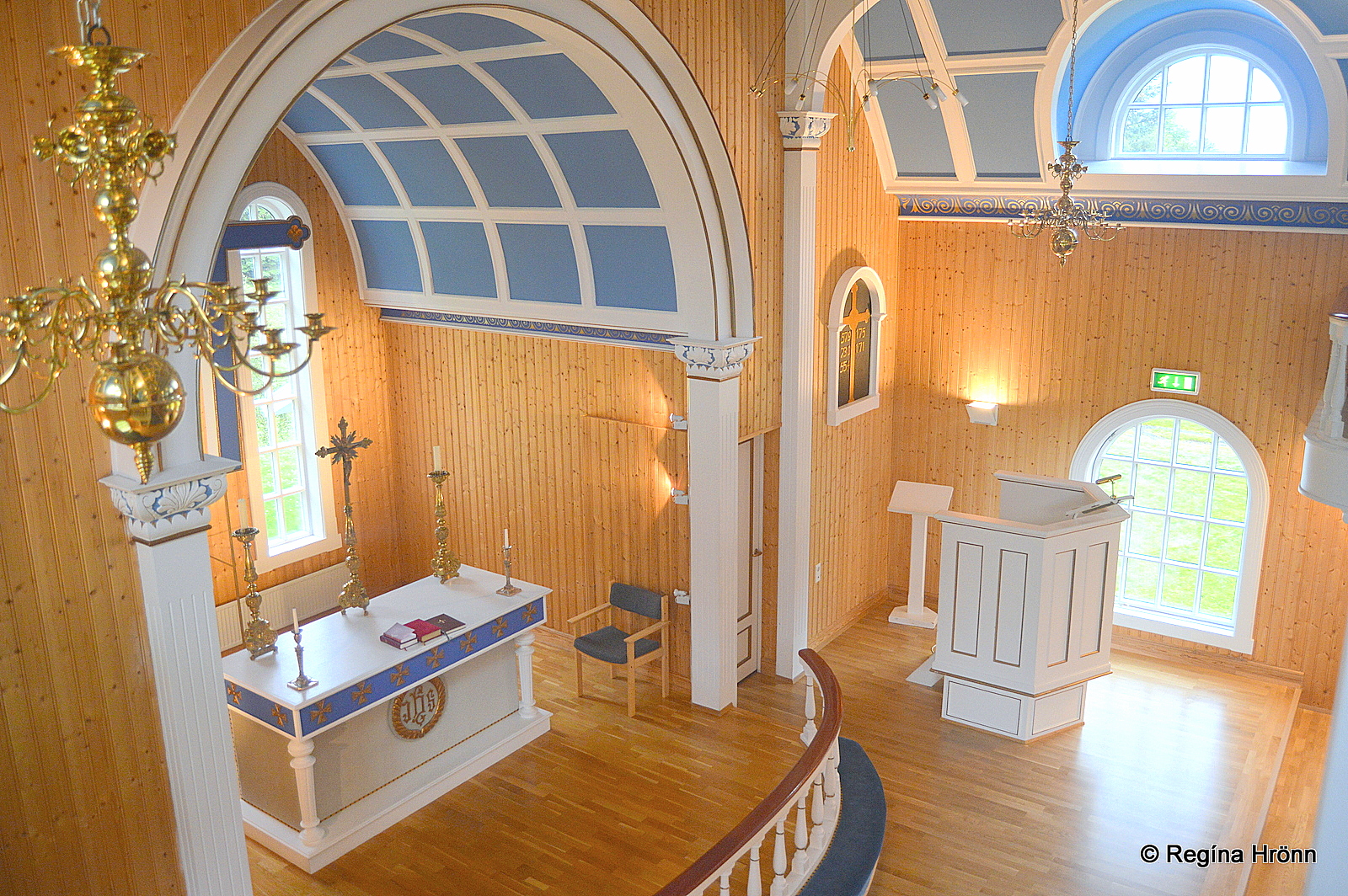
Inside the Blue Church
That church was moved to the town back in 1920 and there is an interesting story related to the move.
Do you see the small rock beside the church?
That rock is a replica of Dvergasteinn – the Rock of the Dwarfs which stood by the church at Vestdalseyri.
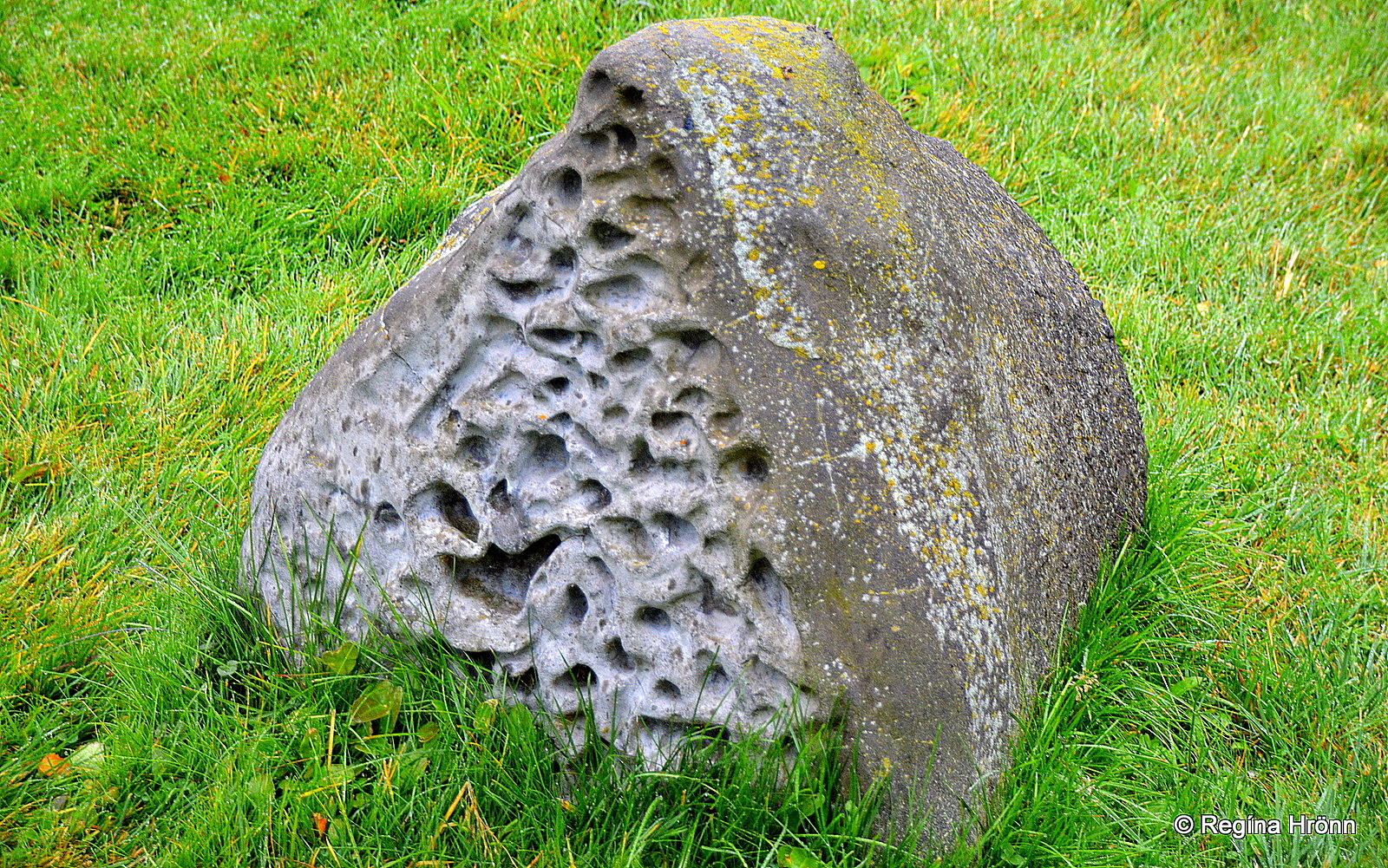
The replica of Dvergasteinn
I will show you the original Dvergasteinn and tell you the folklore a little bit further on in my travel-blog.
The colorful Geirahús house
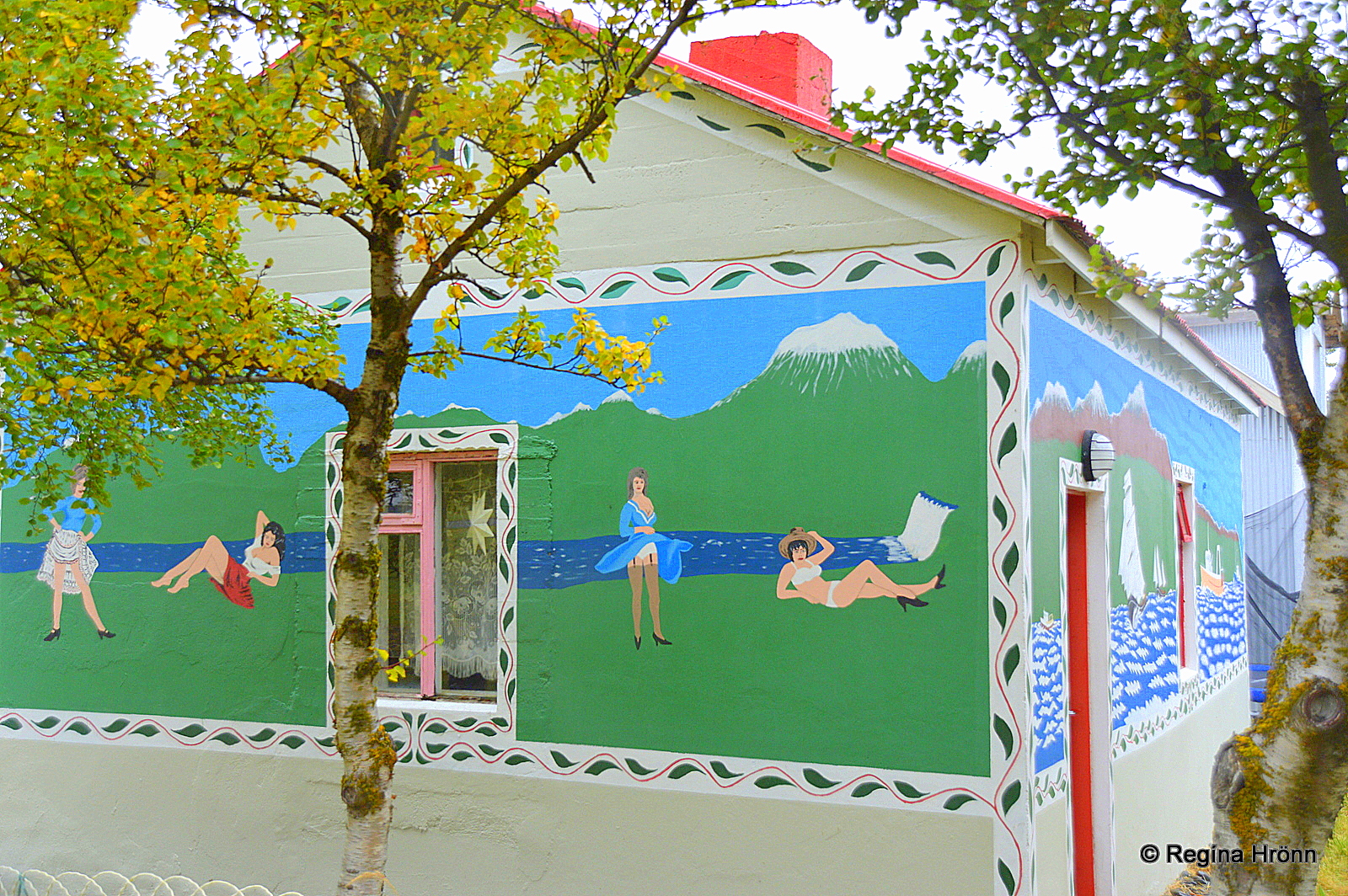
Geirahús house
One of the most decorative houses in Seyðisfjörður is Geirahús house in Oddagata street.
Geirahús was the home of the folk artist Ásgeir Emilsson (1931-1999), but Geiri is a nickname for the Icelandic male name Ásgeir.
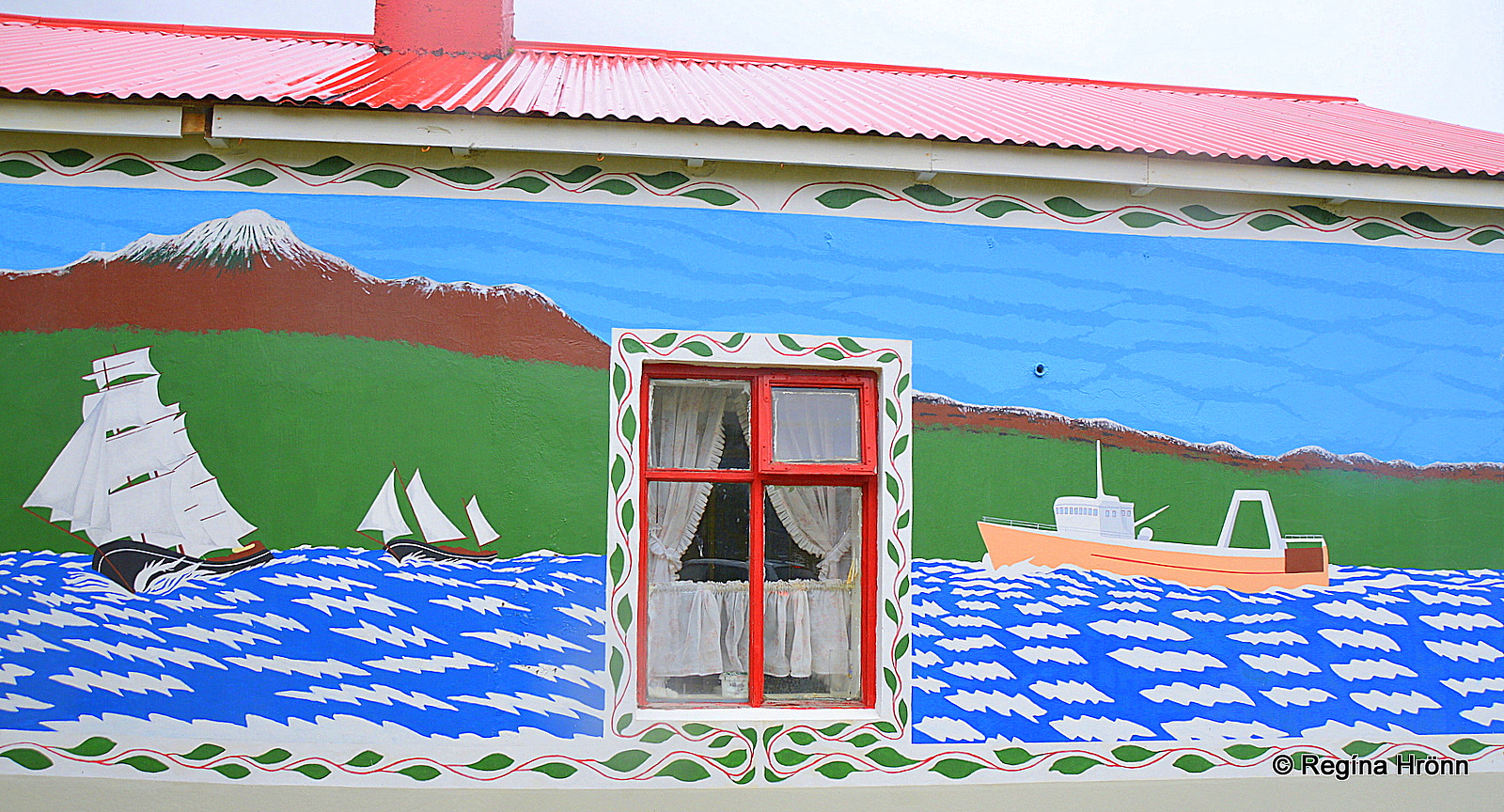
Geirahús house
Geiri was born in Seyðisfjörður and lived here his whole life and pursued his so-called naive art.
For the last 20 years of his life, he lived at Geirahús which was also his studio.
Geiri was an artist at heart as you can see when you visit his house, as he has painted the most beautiful murals on the outer walls of the house.
The colorful house has been preserved almost as it was when Geiri died in 1999.
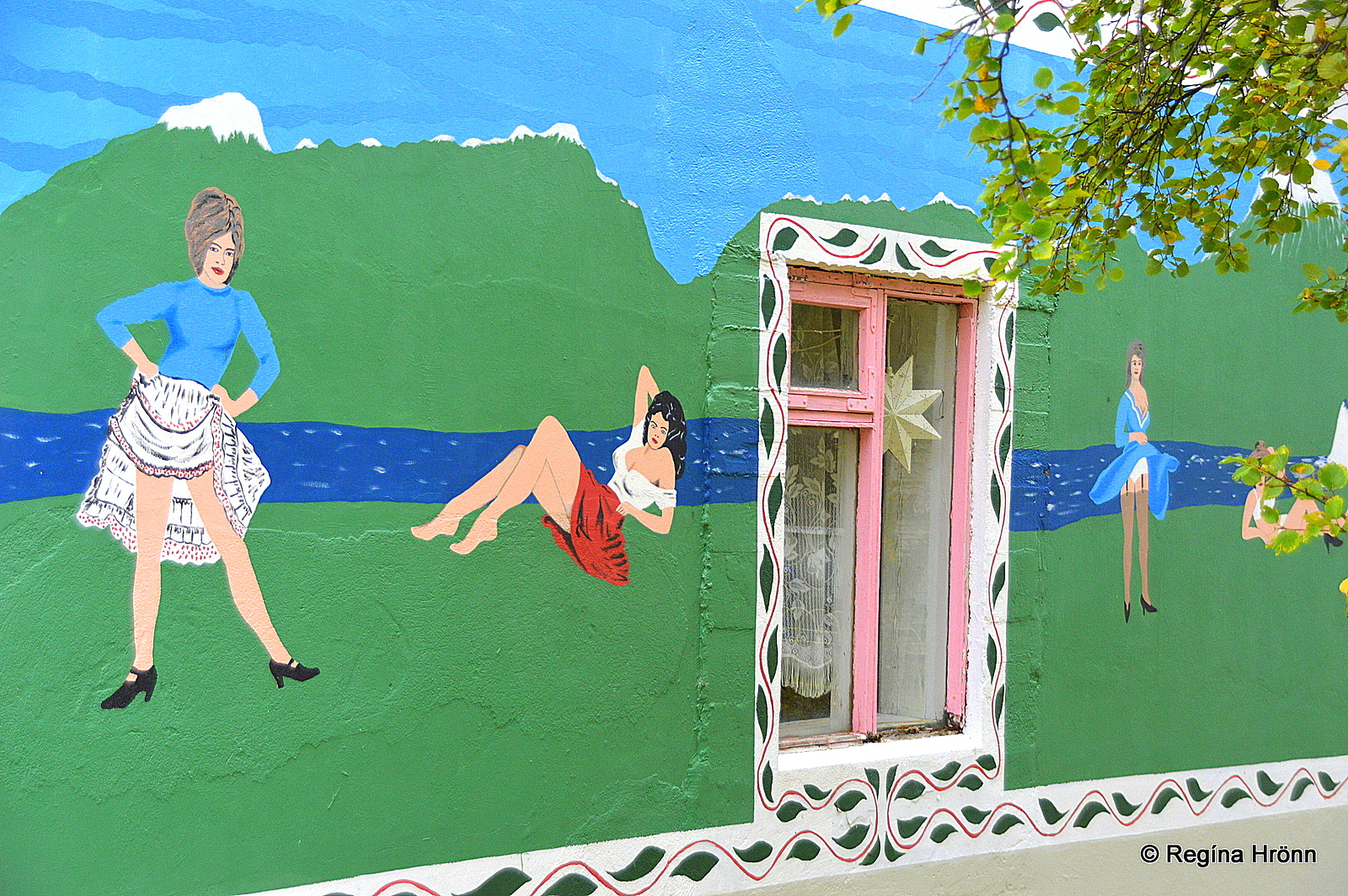
Geirahús house
The guardian of Geirahús is Skaftfell – Center for Visual Art in Seyðisfjörður, which runs a museum at Geirahús.
You can book a private tour for up to 5 people of the house at Skaftfell.
Landslides in Seyðisfjörður
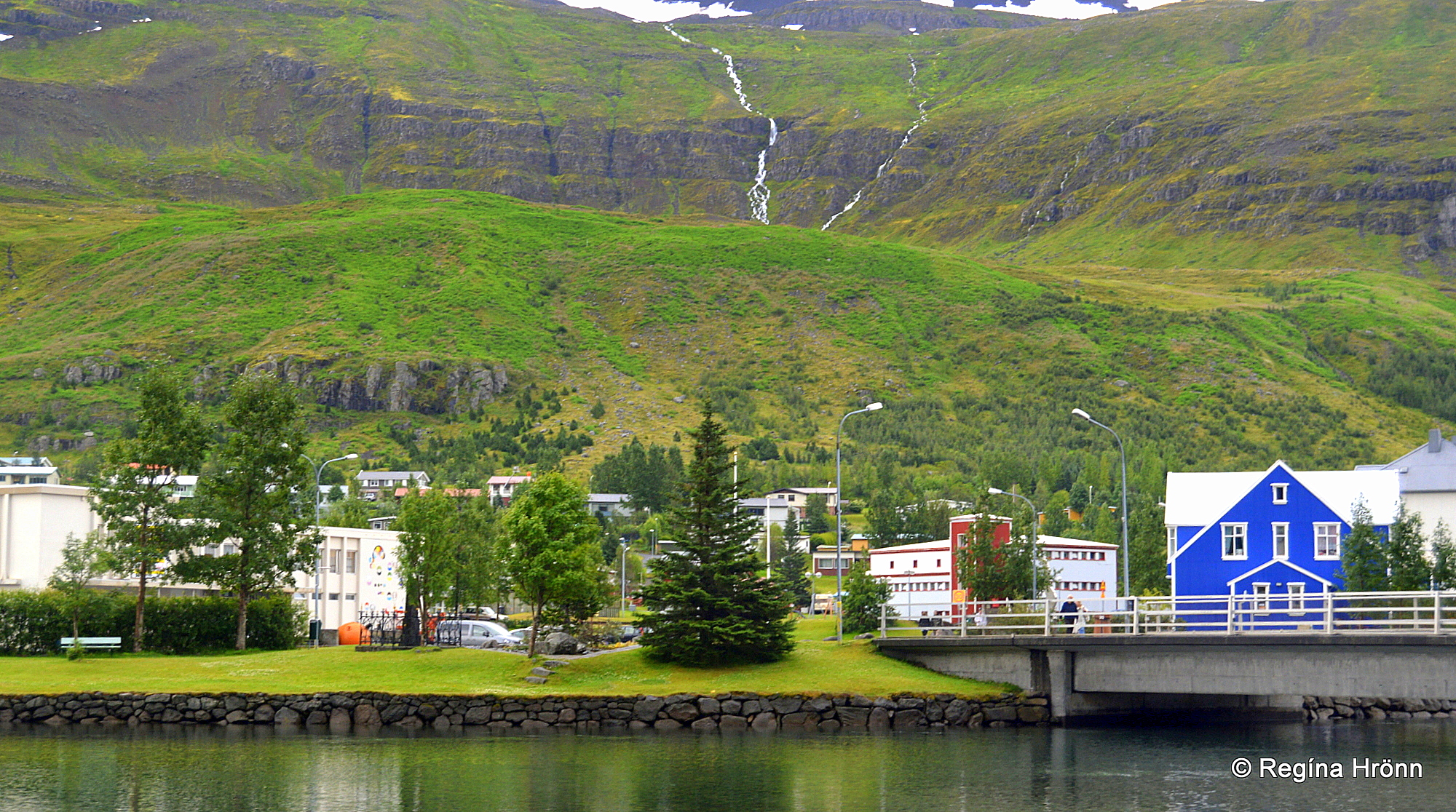
Seyðisfjörður – Búðareyri
There are some dangers that follow living beneath steep mountains as I have shown you in other travel-blogs. In the wintertime, there is a risk of avalanches falling on the villages and towns in Iceland.
There is also the risk of landslides after heavy rain, and the biggest landslide ever to hit a town in Iceland fell on several houses on the 18th of December 2020 at the Búðareyri part of the town.
Fortunately, nobody was hurt but some people had a narrow escape. Many houses were damaged and destroyed, including some historic houses like the Technical Museum of East Iceland.
The Sound Sculpture Tvísöngur
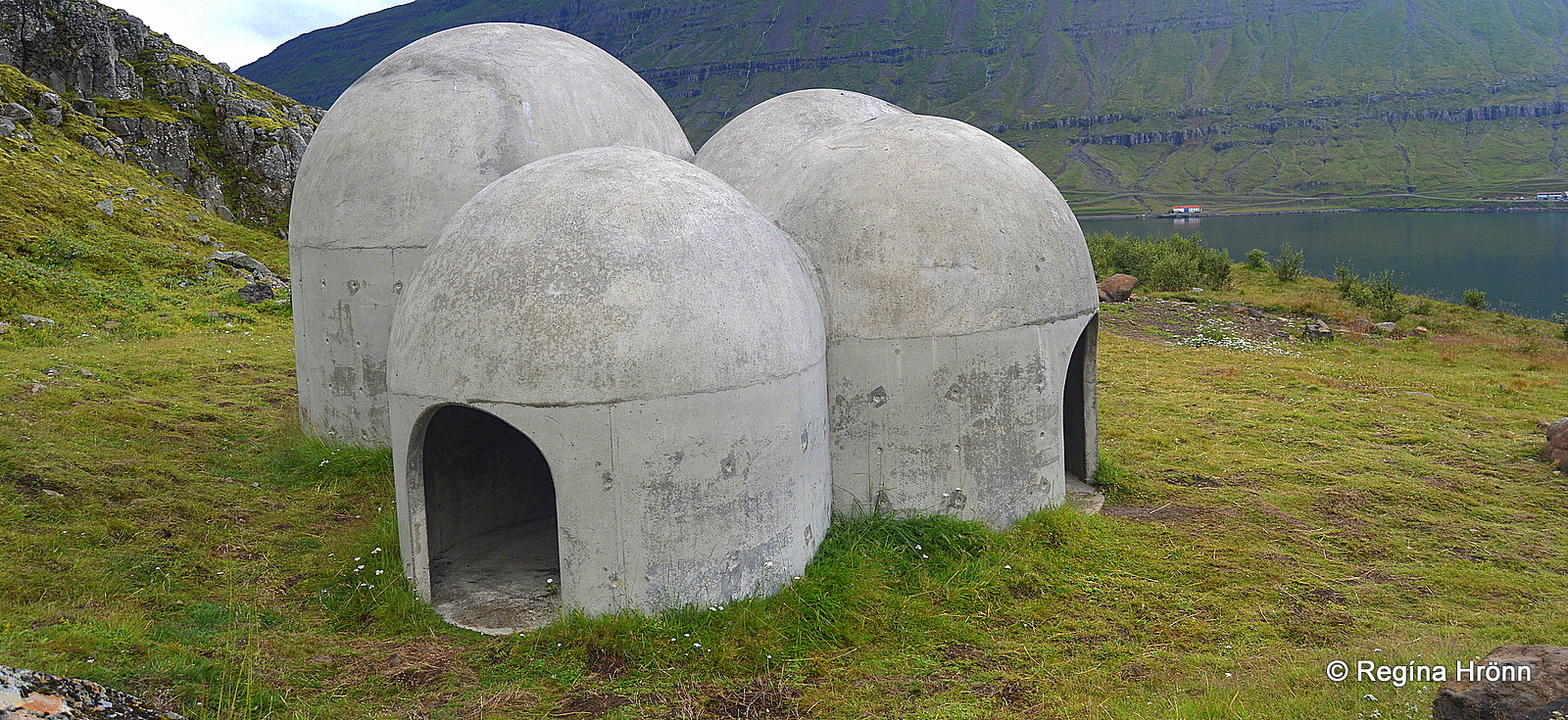
Tvísöngur sound sculpture
On the mountainside above the town, you will find one of the attractions in Seyðisfjörður, the sound sculpture Tvísöngur – the Duet.
The sound sculpture is a mushroom- or igloo-like work of art, made of concrete. It is in 5-parts, interconnected with openings.
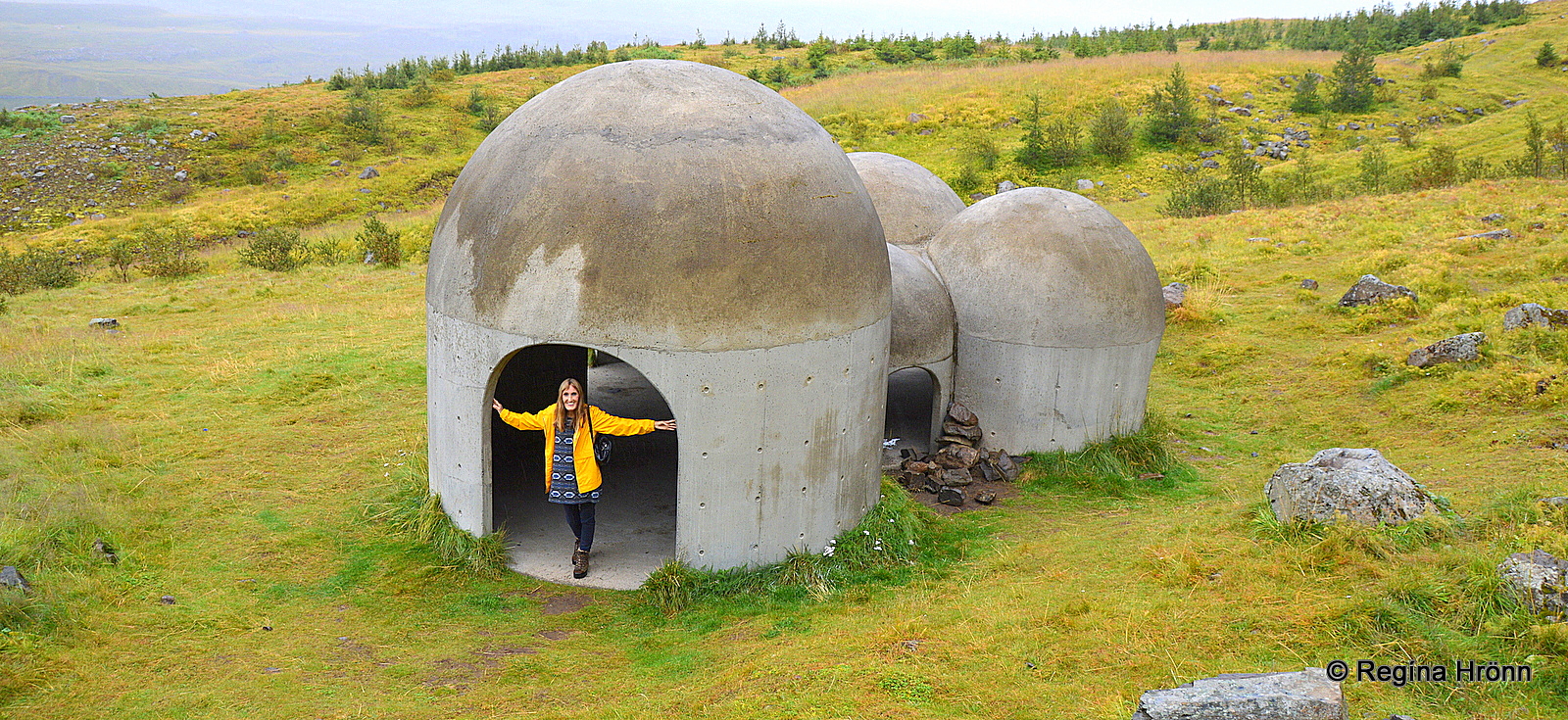
Tvísöngur in the rain
The sound sculpture is a part of a series of artwork made by the German artist Lukas Kühne, dedicated to frequency and space in musical forms.
When you visit Tvísöngur notice how the sound changes inside each of the forms.
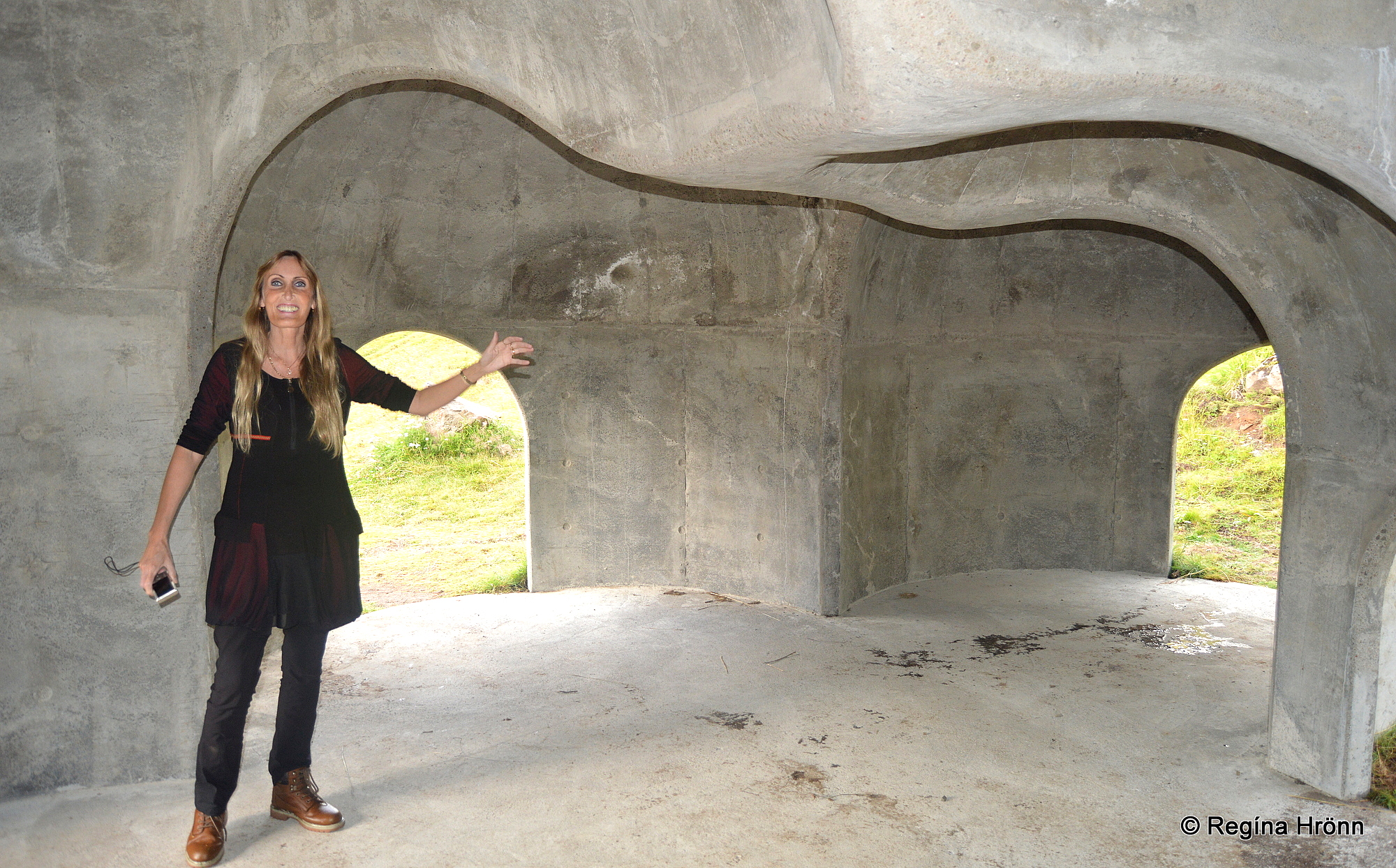
Inside Tvísöngur
The sound sculpture is well worth a visit and from it, you have a great view of the town and the Seyðisfjörður fjord.
Fjarðarselsvirkjun power plant
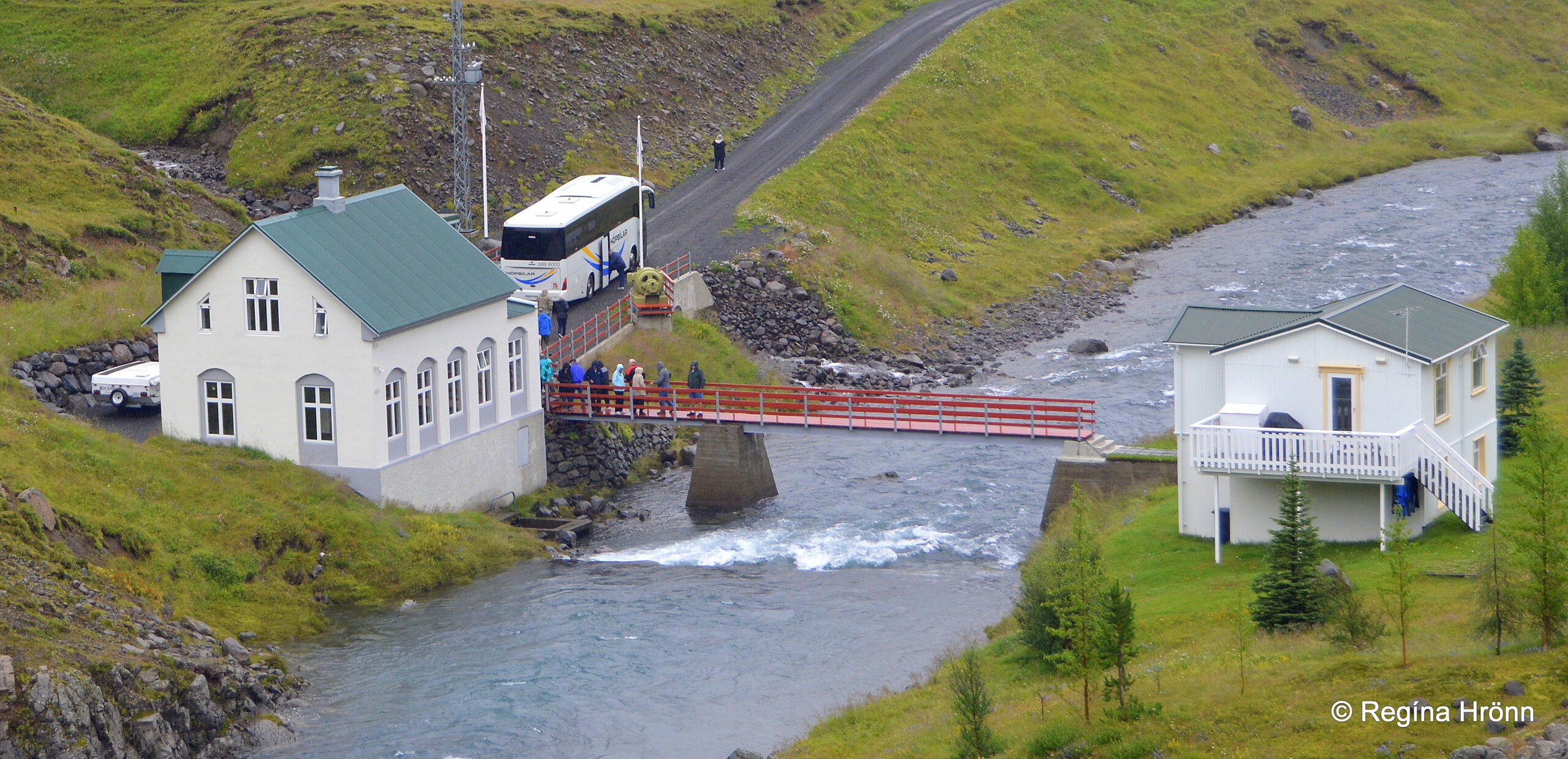
Fjarðarselsvirkjun – the station house is to the left
Just above the town, you will find Iceland’s oldest operational power plant, Fjarðarselsvirkjun at Fjarðarsel, which marked a turning point in Iceland’s electrification.
This power plant is the first power plant in Iceland to generate alternating current.
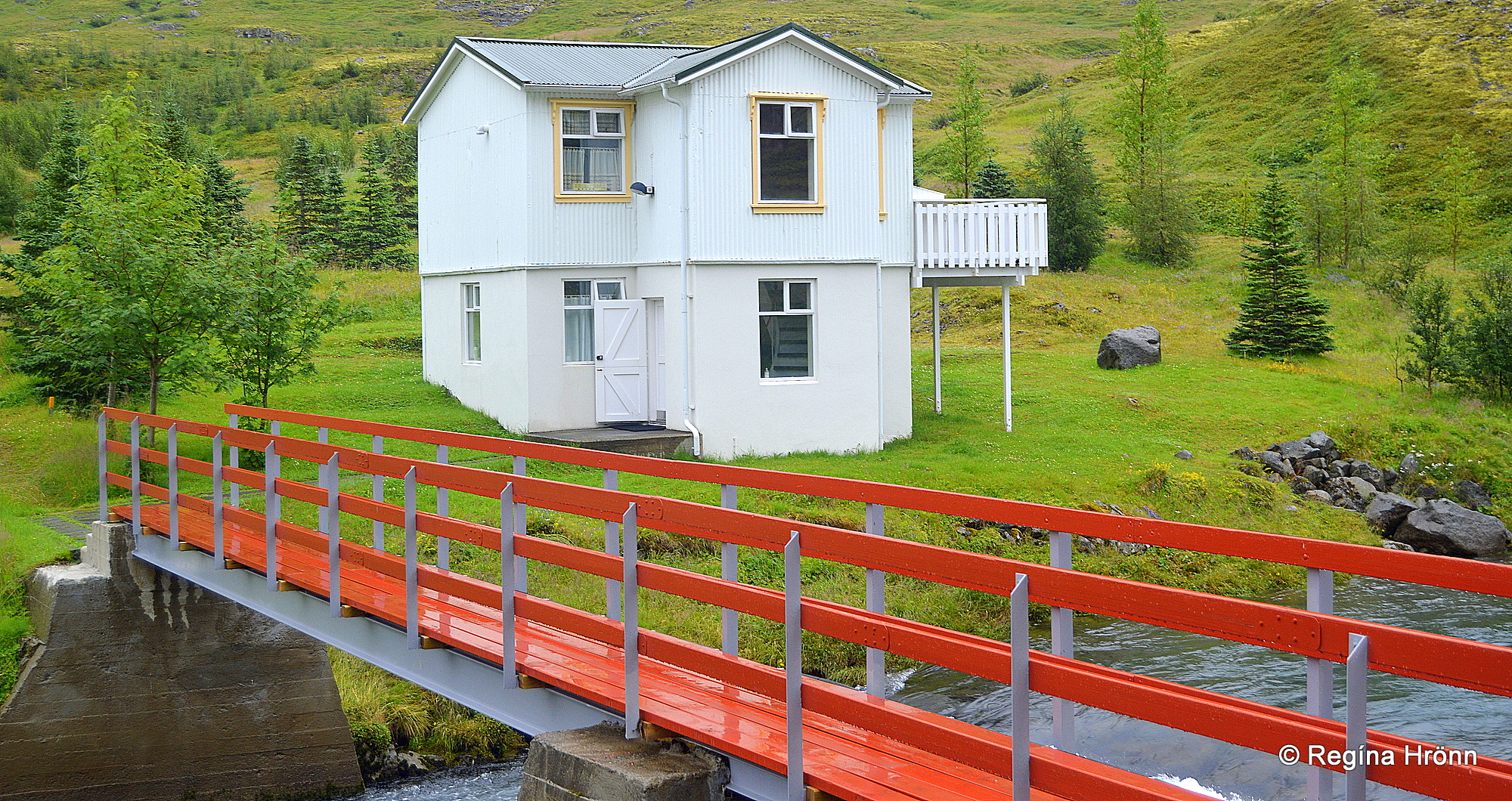
Fjarðarsel
Fjarðarselsvirkjun started operating in October 1913 and Seyðisfjörður town got electric light.
The Iceland State Electricity – RARIK, took over the operation of the power plant in 1958 and opened an exhibition in the station house on the power plant’s 90th anniversary.
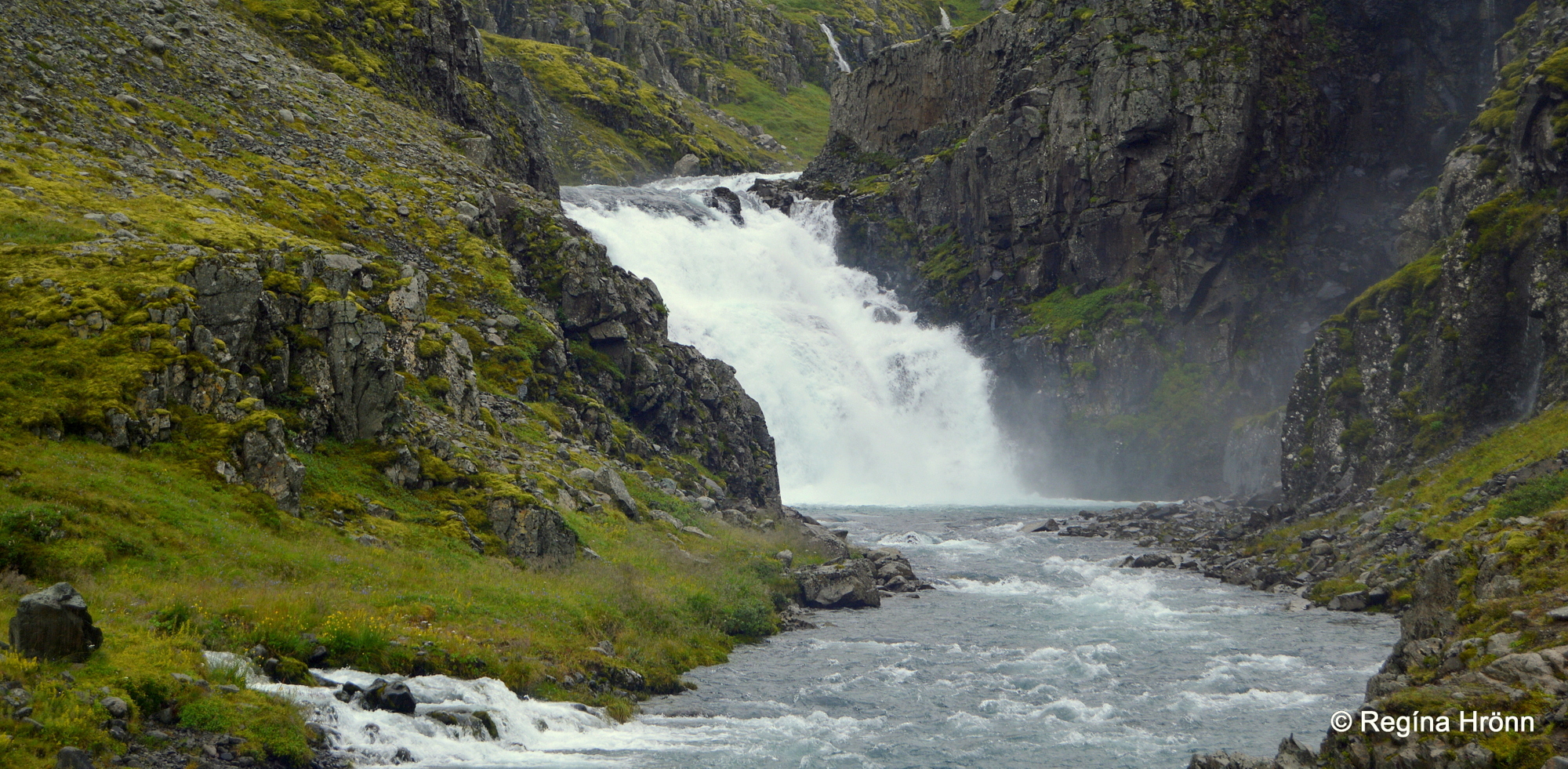
Fjarðarselsfoss waterfall
Just above Fjarðarselsvirkjun, I passed by several smaller waterfalls in Fjarðará river.
Now, let’s go chasing some more waterfalls.
Gufufoss waterfall
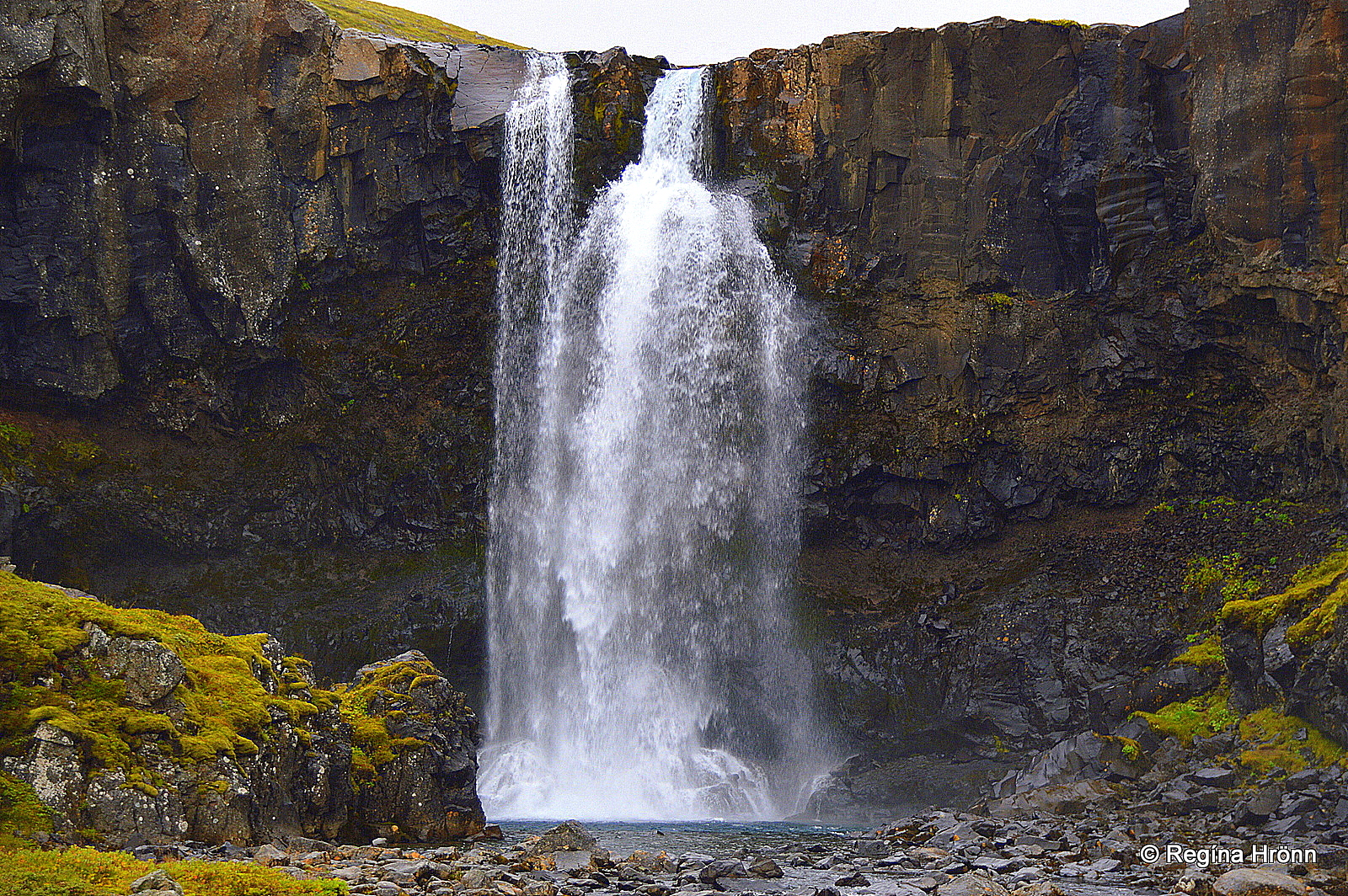
Gufufoss waterfall
There are several beautiful waterfalls in Seyðisfjörður.
Fjarðará river runs down the Fjarðarheiði heath and creates some 25 waterfalls. One of the best-known waterfalls is Gufufoss – Steam falls.
Gufufoss is easily accessible as it is right by road 93.

Gufufoss waterfall
It is possible to walk close to the waterfall, but true to its name then it emits a lot of mist, so it is best to admire it from a distance.
The spot for the best photo has been marked with a small platform.
Vestdalseyri and Vestdalsfossar waterfalls
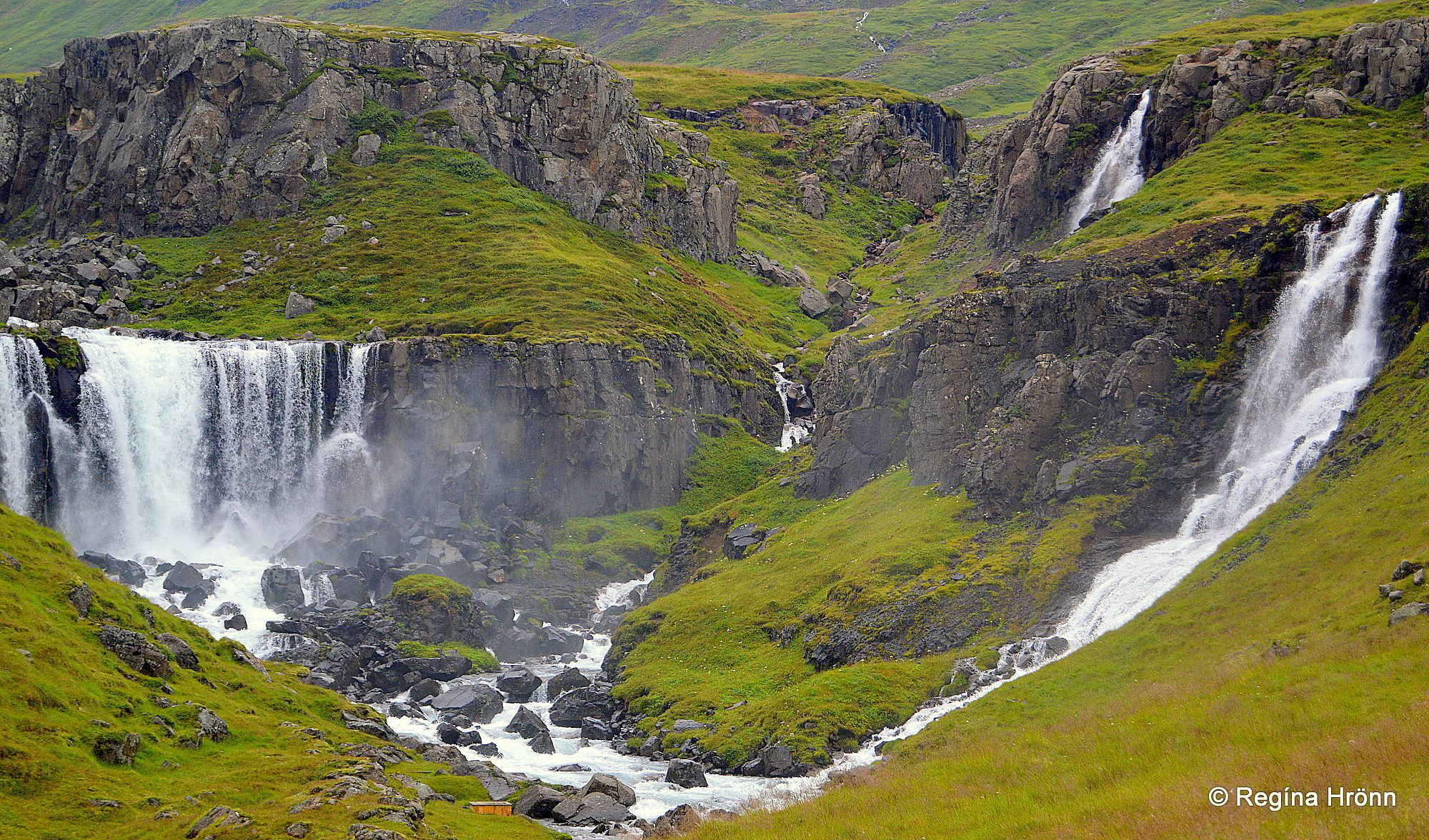
Vestdalsfossar falls
Now, let’s drive for approx. 2.5 km outside of Seyðisfjörður town, and stop by Vestdalseyri where some ruins of a small fishing village can be seen.
At Vestdalseyri a whaling station was located.
From 1851-1963 this small village with a population of approx. 180 people was thriving. Back then Seyðisfjörður was divided into 3 parts Búðareyri, Fjarðaralda, and Vestdalseyri.
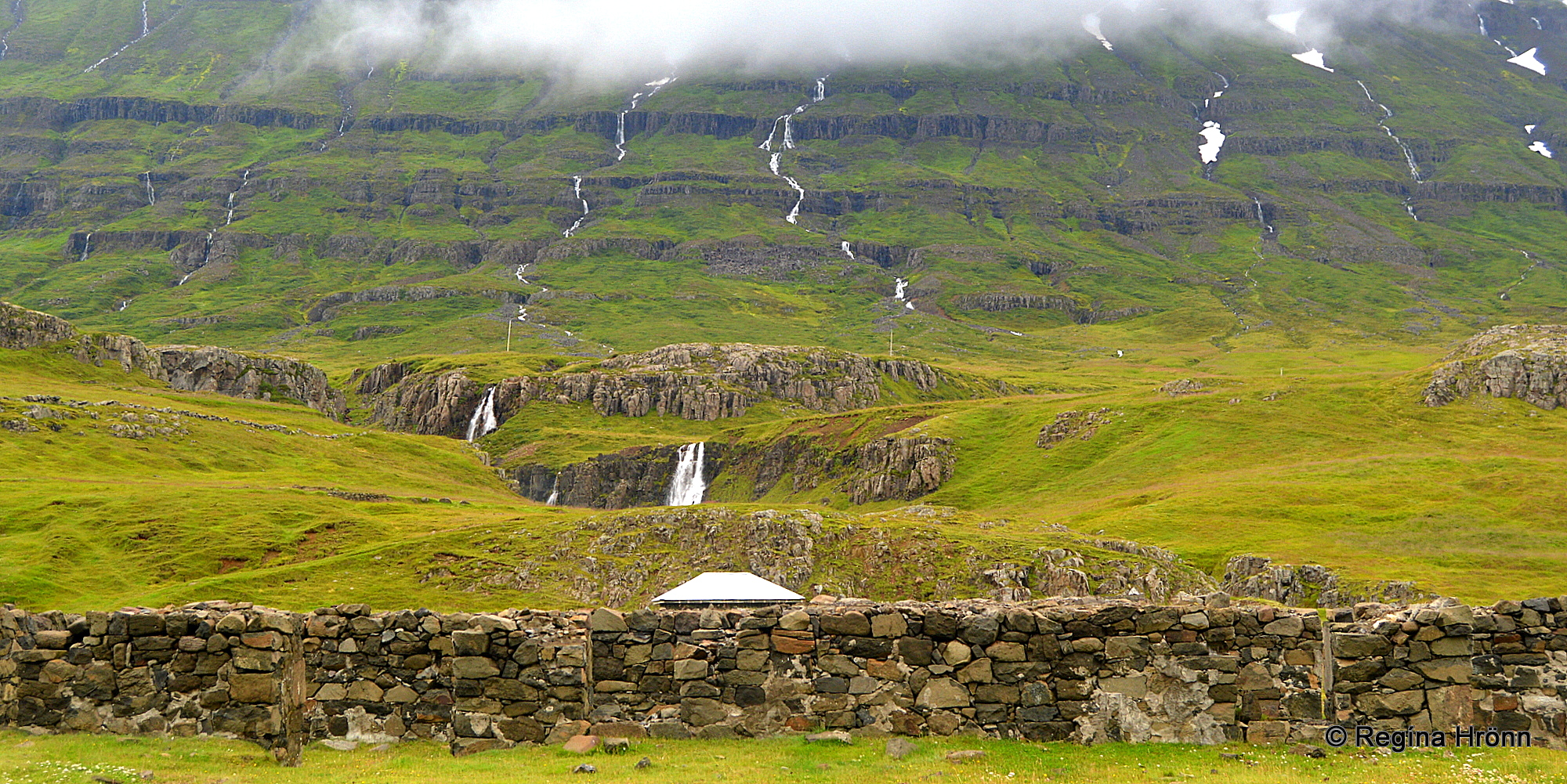
Vestdalseyri
The village is now deserted and only the historic remains are what is left of a formerly blossoming village.
On the other side of the road, you will find a series of waterfalls, Vestdalsfossar falls or West valley falls.
There is only a short walk into the ravine (approx. 5 minutes), where you will see beautiful waterfalls left and right.
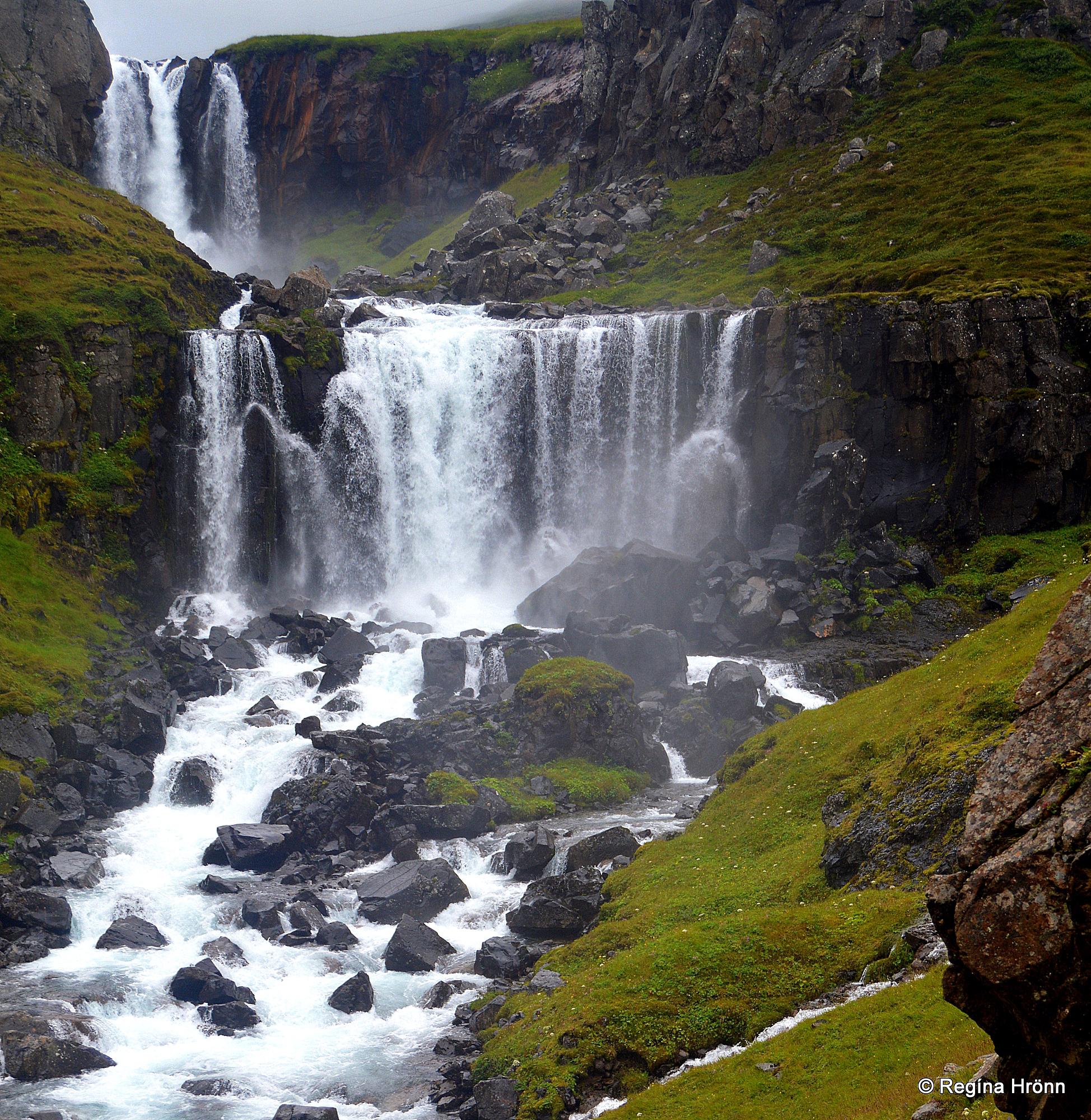
Vestdalsfossar falls
It is an absolutely magical stop if you are a waterfall fan like I am.
Now, let’s drive a little bit further and visit a rock in which dwarfs reside.
Dvergasteinn – the Rock of the Dwarfs
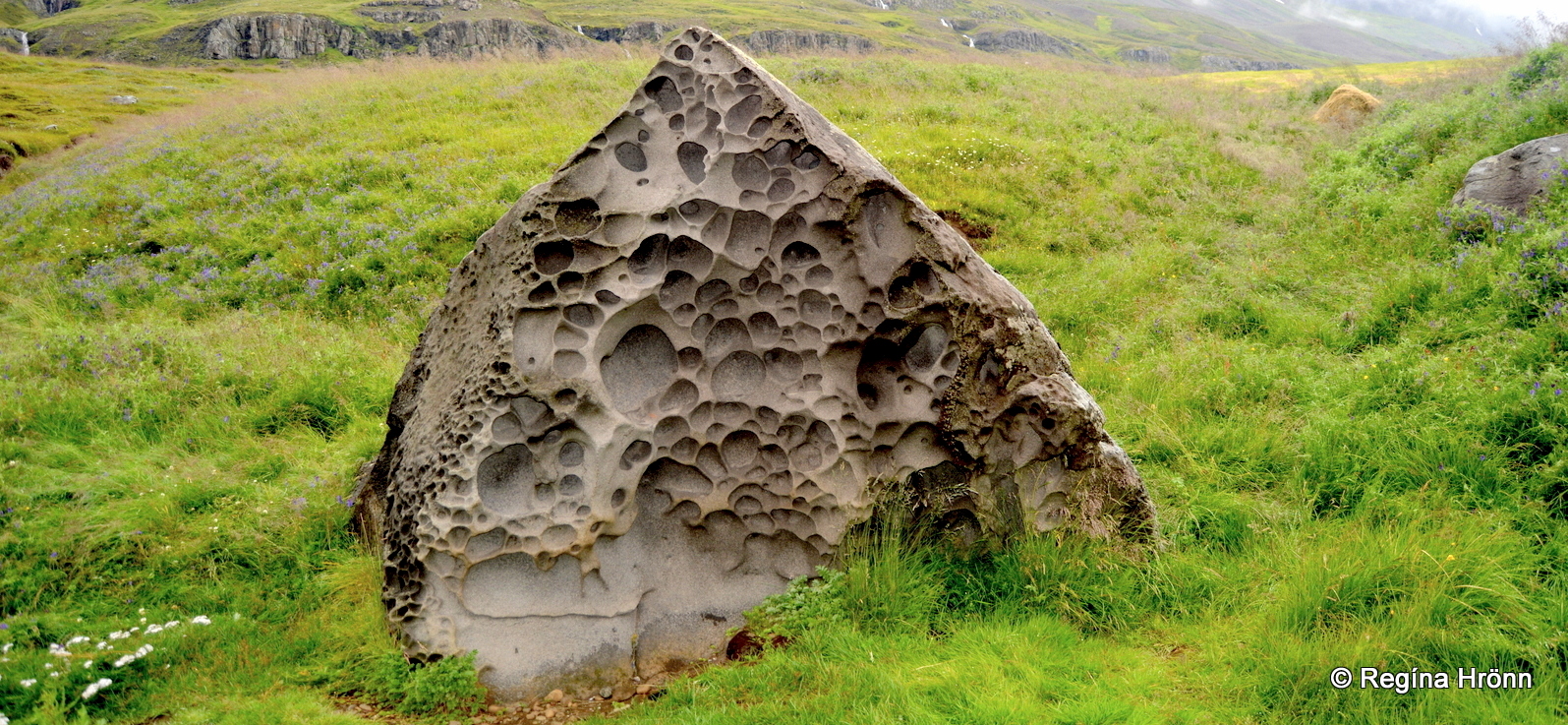
Dvergasteinn
There is more to the world than what we can see, and Icelandic folklore is filled with stories about the elves – the hidden people of Iceland, dwarfs, ghosts, and trolls.
One such story took place here in Seyðisfjörður. It tells us the story about the dwarfs in Dvergasteinn rock.
I found the story in Þjóðsögur Jóns Árnasonar – the Collection of Folklore by Jón Árnason and translated it into English.
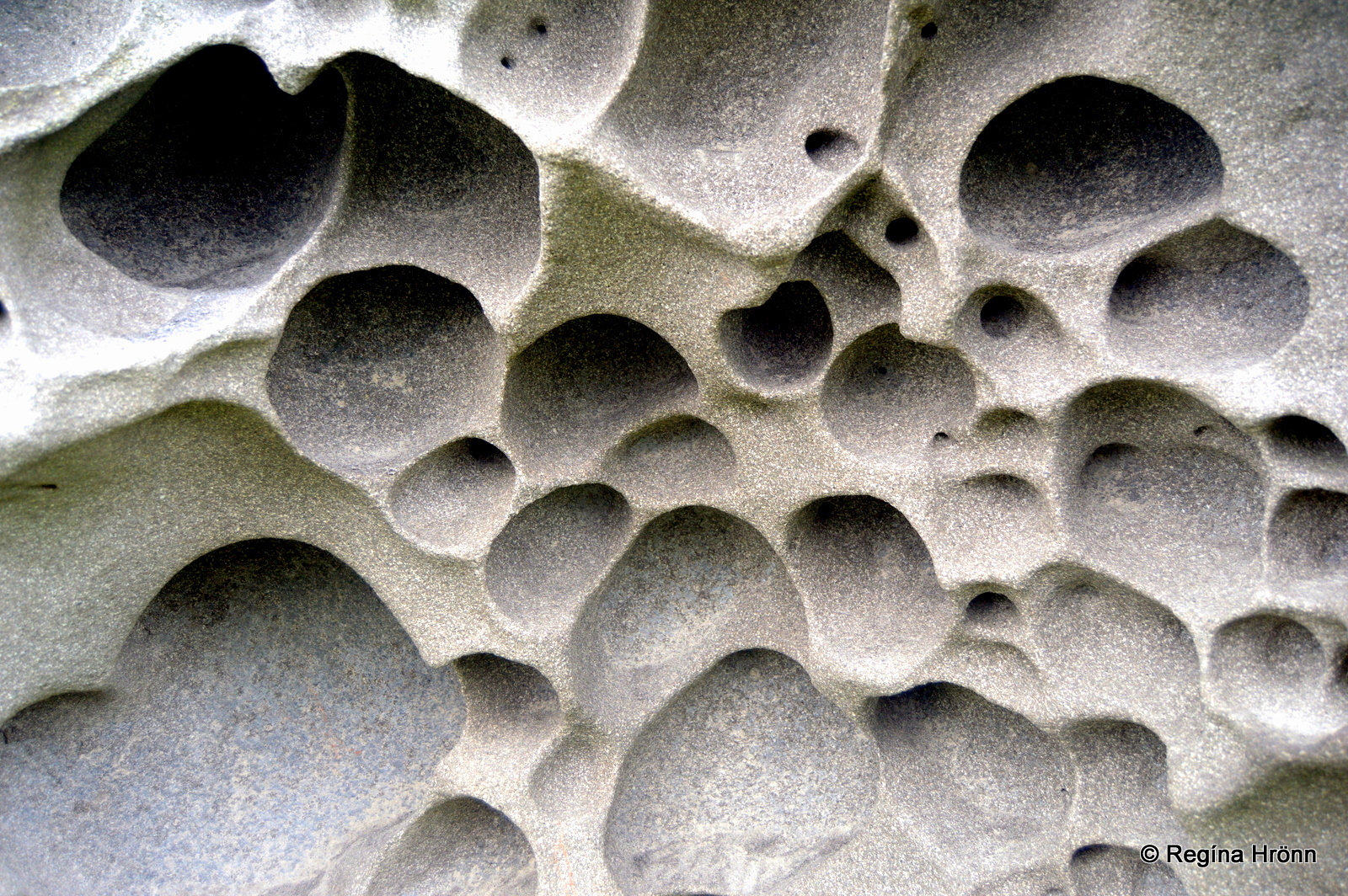
Honeycomb weathering – tafoni
I will recapitulate the story here, but if you are interested in reading the whole story then I have written another travel-blog about Dvergasteinn: Dvergasteinn – the Rock of the Dwarfs by Seyðisfjörður in East Iceland.
The vicarage and church of Seyðisfjörður were in the olden times located east of the fjord and not in the town where it now stands.
Later on, in 1882, the church was moved across the fjord to Vestdalseyri.

By Dvergasteinn rock
When the church was almost finished the workers saw Dvergasteinn – the Rock of the Dwarfs sailing across the fjord towards the new location of the church with its inhabitants.
It stopped by the church and the vicarage was given the name Dvergasteinn in the everlasting memory of the piety of the dwarfs.

Dvergasteinn rock
The church was moved again in 1920 from Vestdalseyri into town, where there is now a small replica of Dvergasteinn next to the church.
But the original rock still stands alone in its old place at Vestdalseyri.
Can you see the resemblance between Dvergasteinn rock in my photo above and the replica beside the Blue Church?
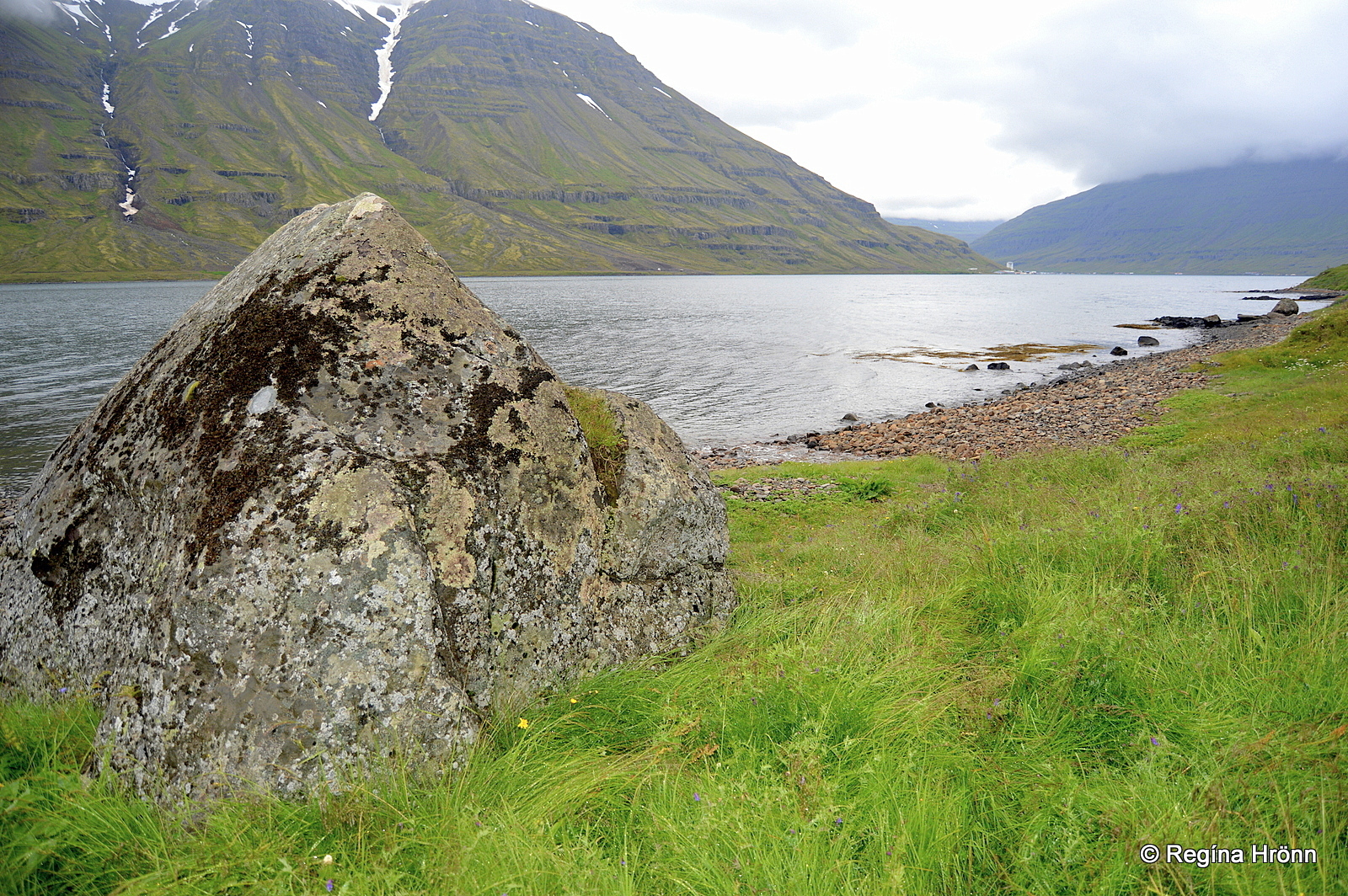
Dvergasteinn rock gazing in the direction of the town and the new church-site
If you want to visit Dvergasteinn or other habitation or churches of the invisible beings with whom we mere mortals share our country, then always quietly ask for permission.
And let’s show respect and be quiet when visiting these places. That is customary here in Iceland and of utter importance.
Now, let’s return back the same way we came.
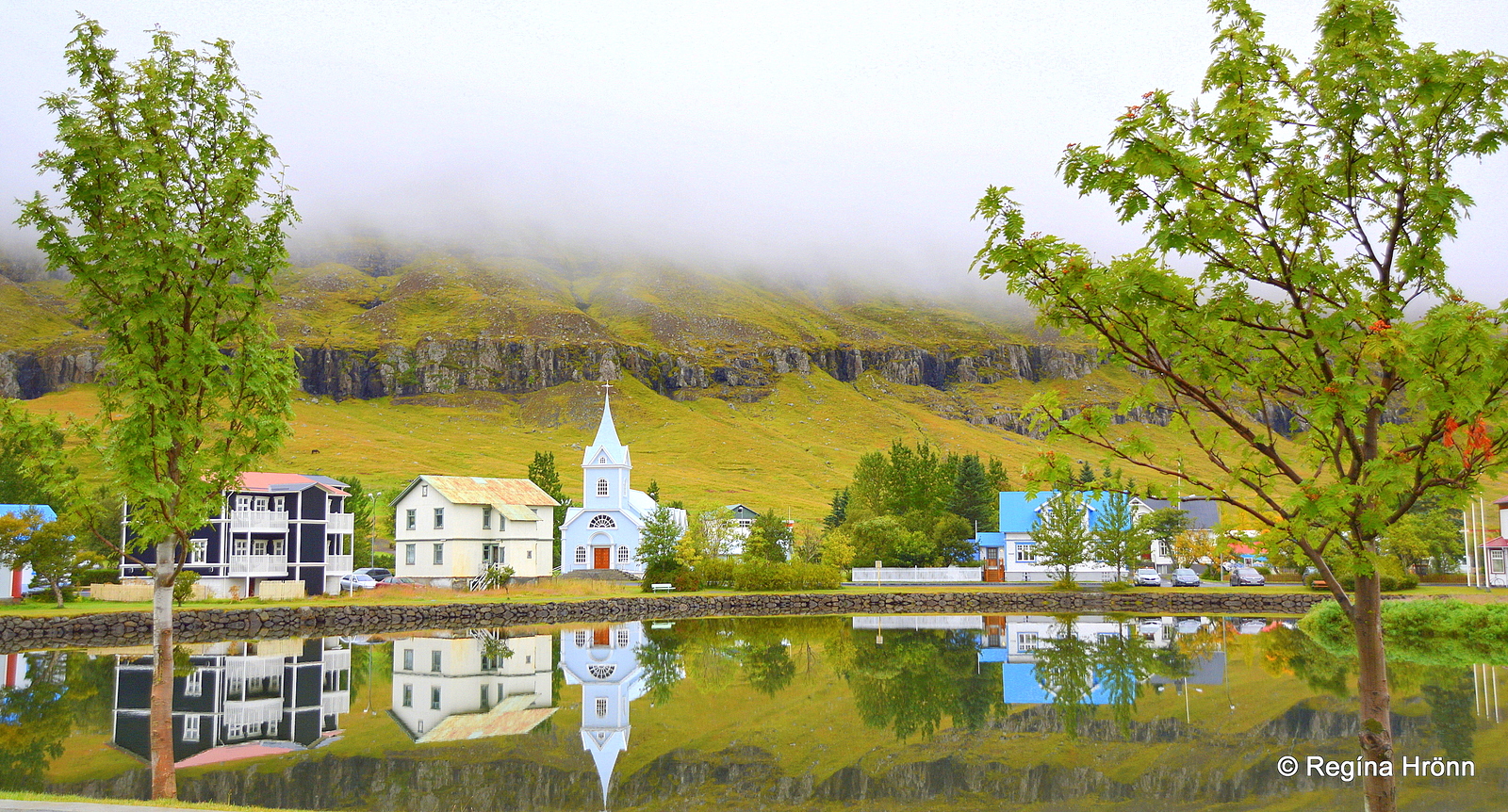
Beautiful Seyðisfjörður
In Seyðisfjörður we have visited waterfalls, seen colorful old houses, the Blue Church and the Rainbow street, Tvísöngur sound sculpture, and the habitation of dwarfs.
Before we leave this lovely town I must mention the annual LungA Art Festival, which takes place in July in Seyðisfjörður and lasts for a whole week.
In my next travel-blog we are going to visit Egilsstaðir town, the capital of East Iceland, and explore the beautiful Fljótsdalur valley: Egilsstaðir in East Iceland and the Pearls of Fljótsdalur Valley.
In this area, you will find many of the pearls of East Iceland.
Have a lovely time in East Iceland 🙂
